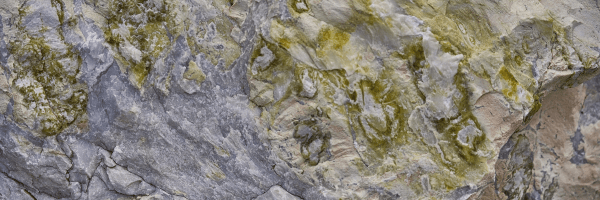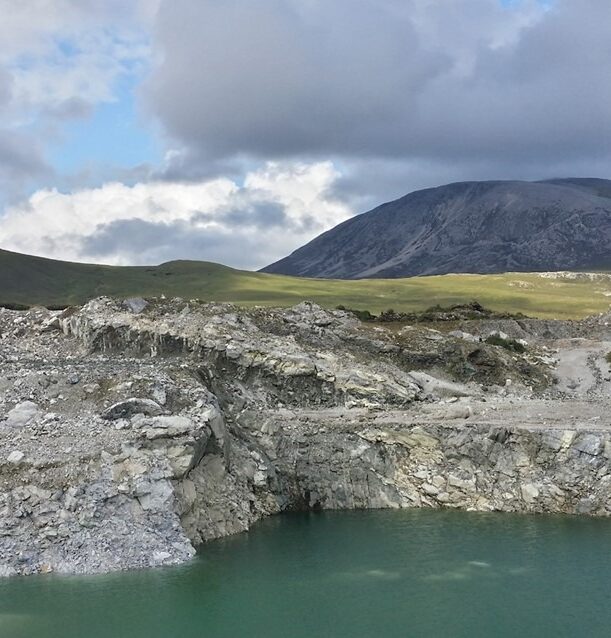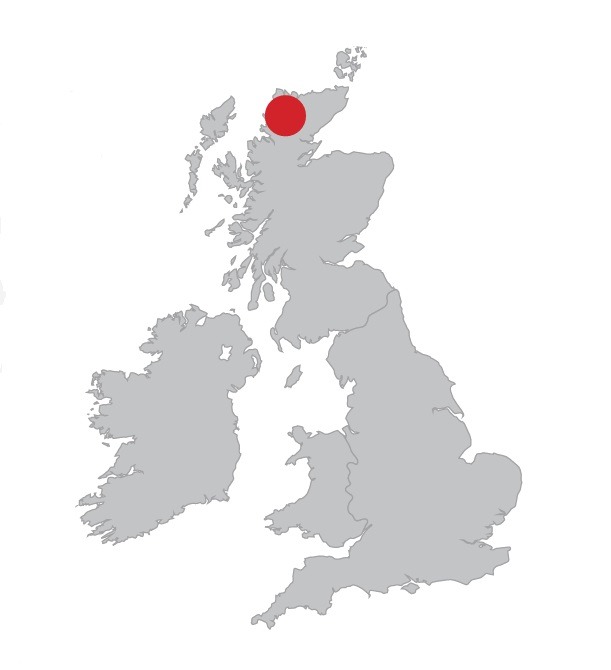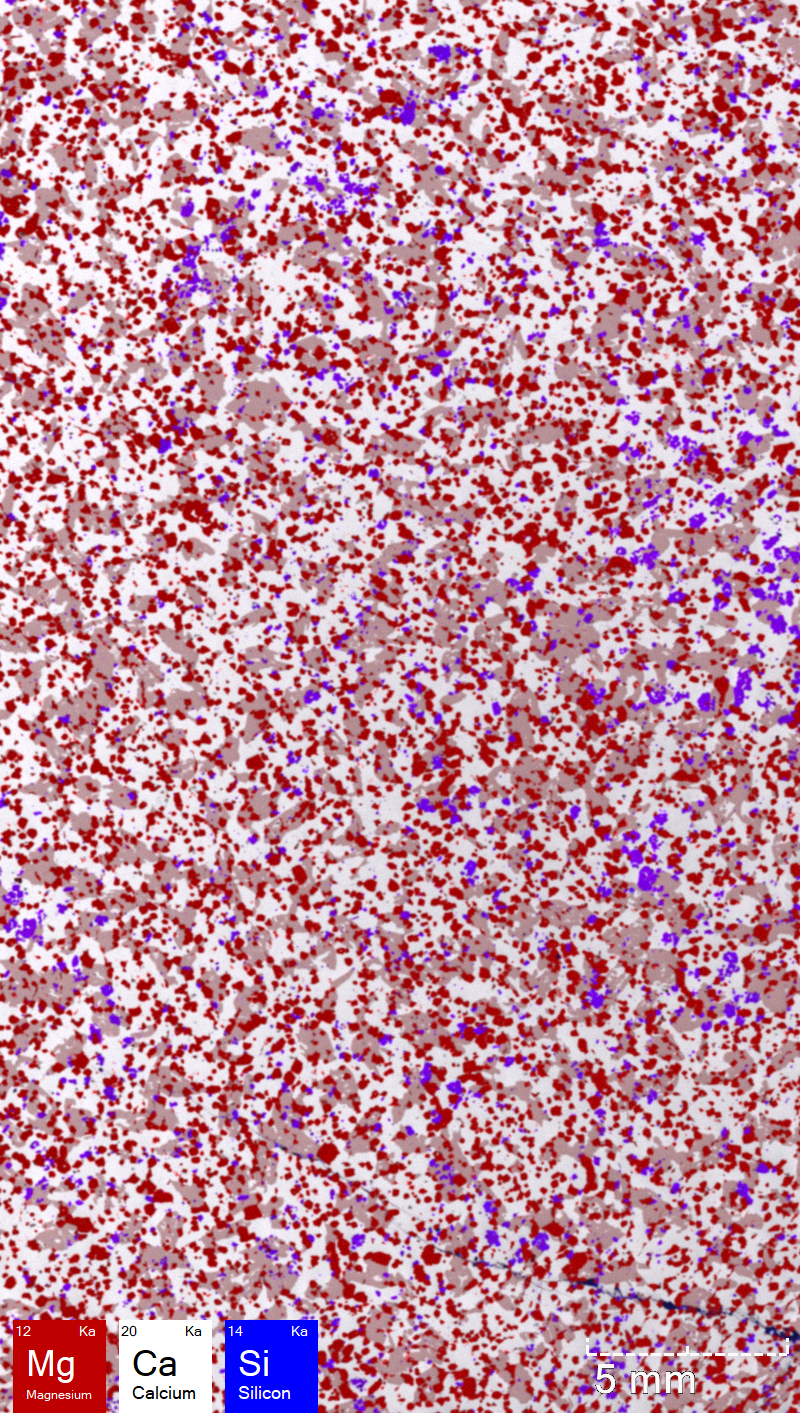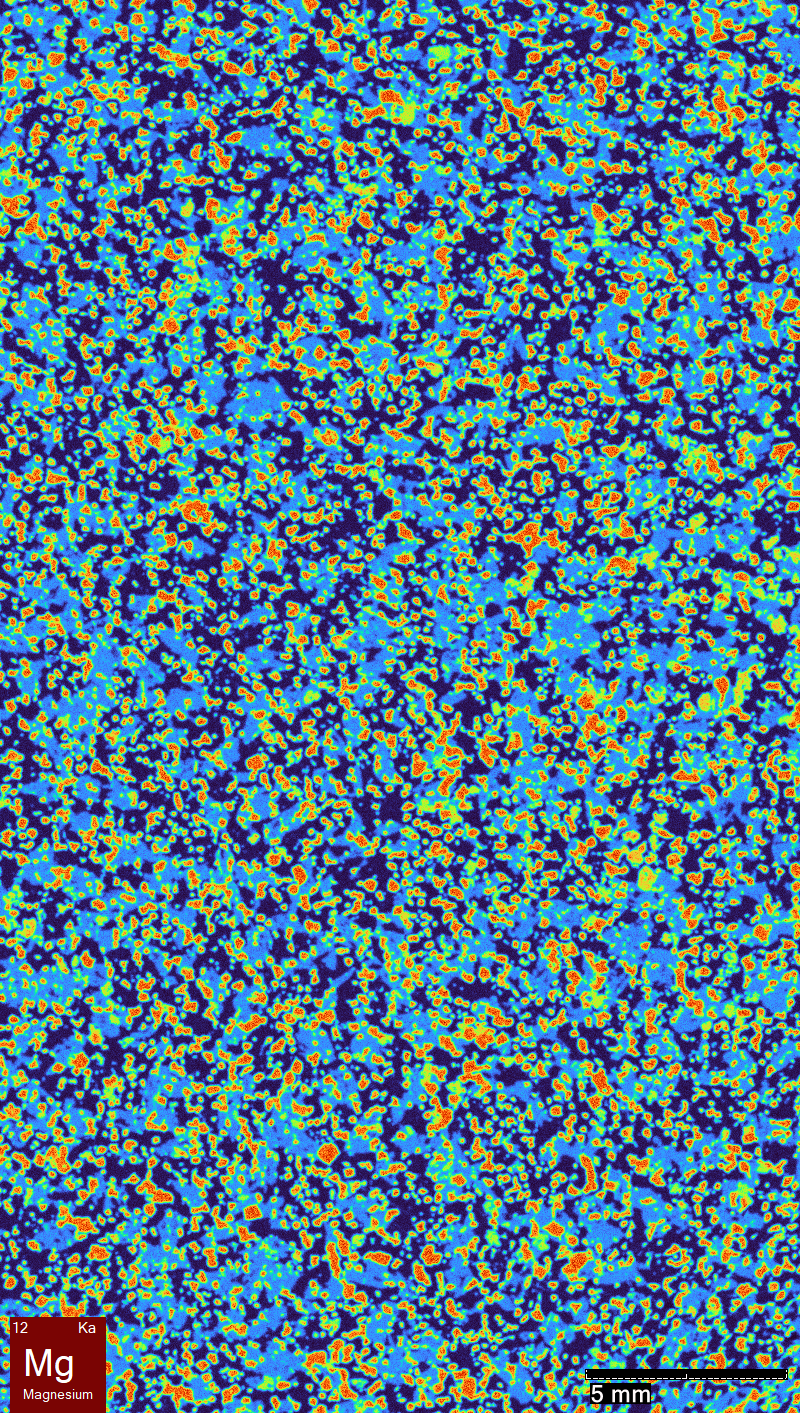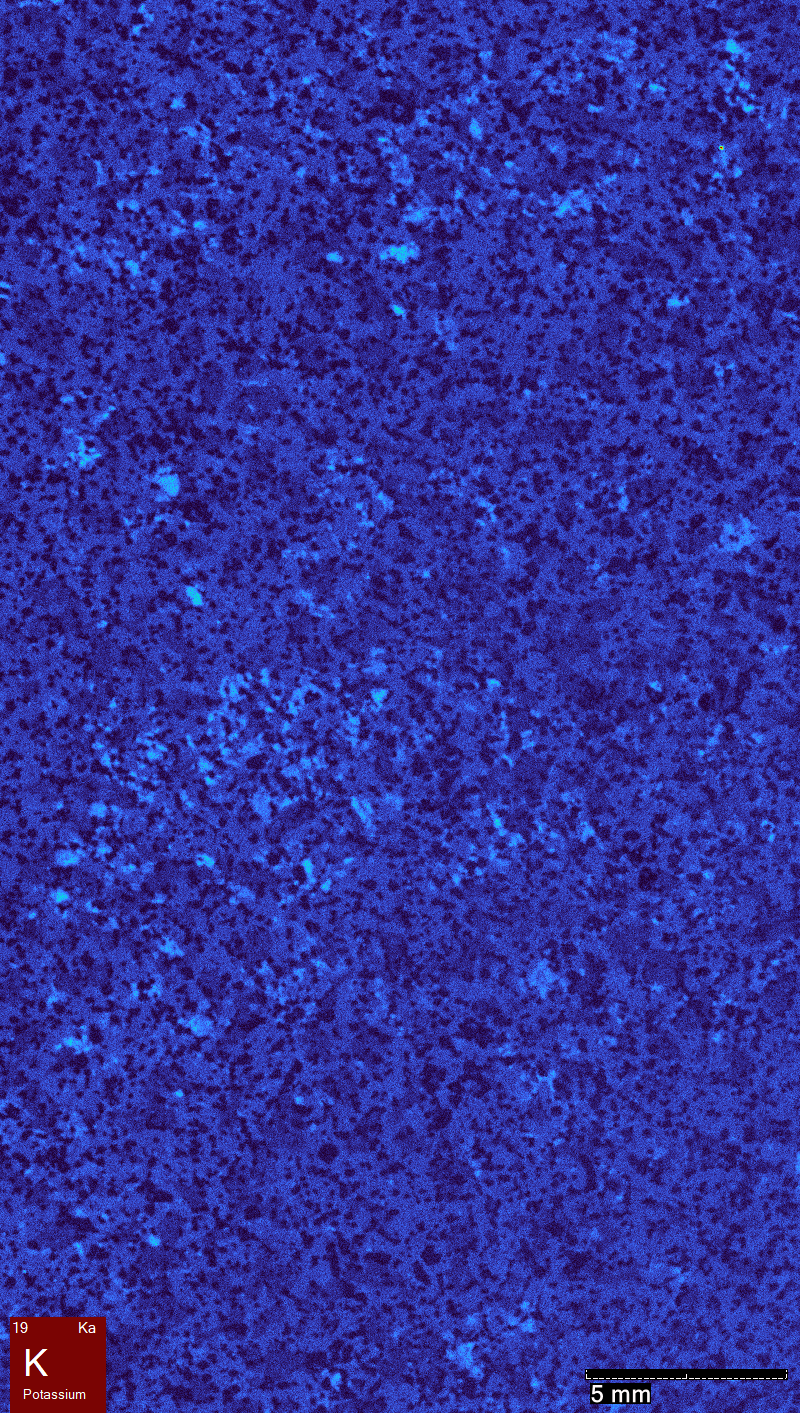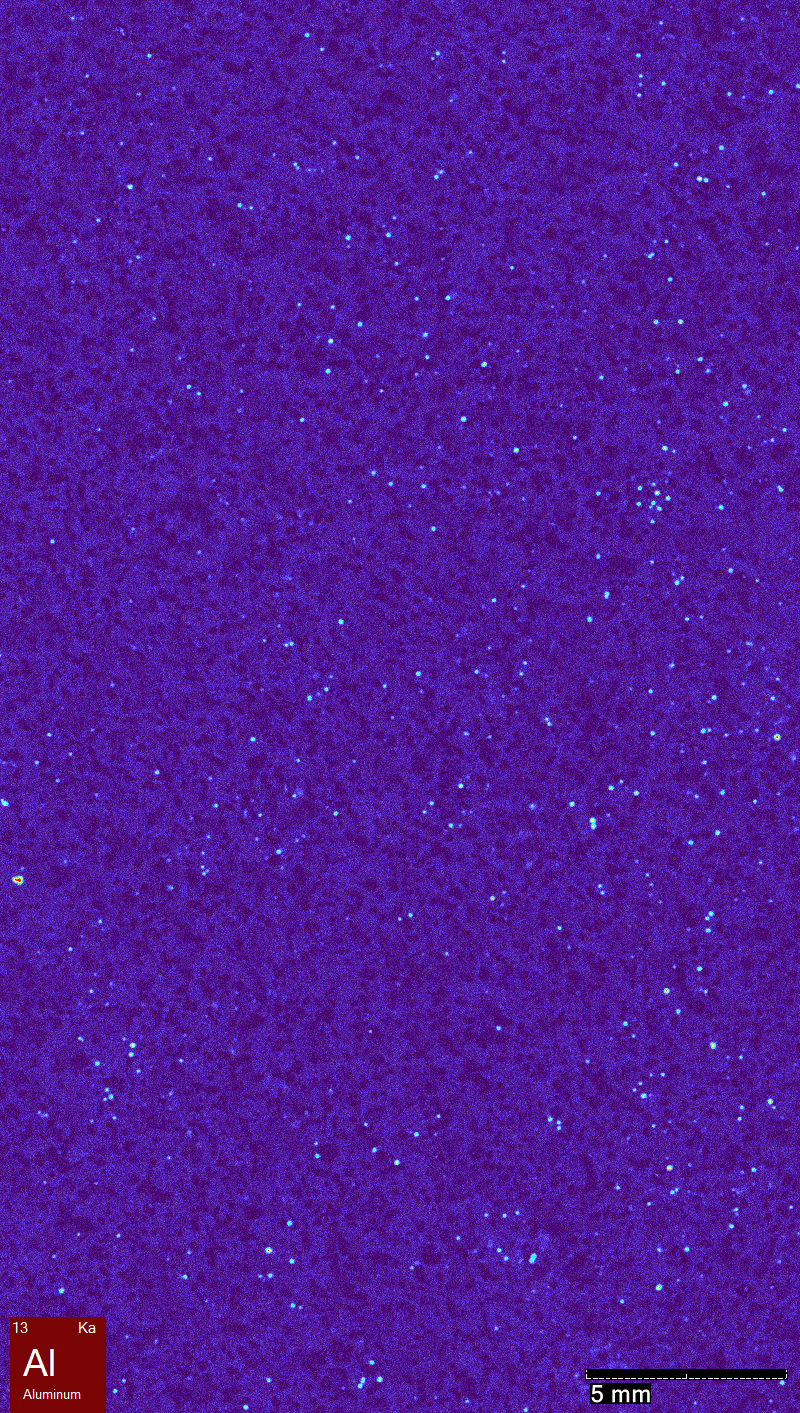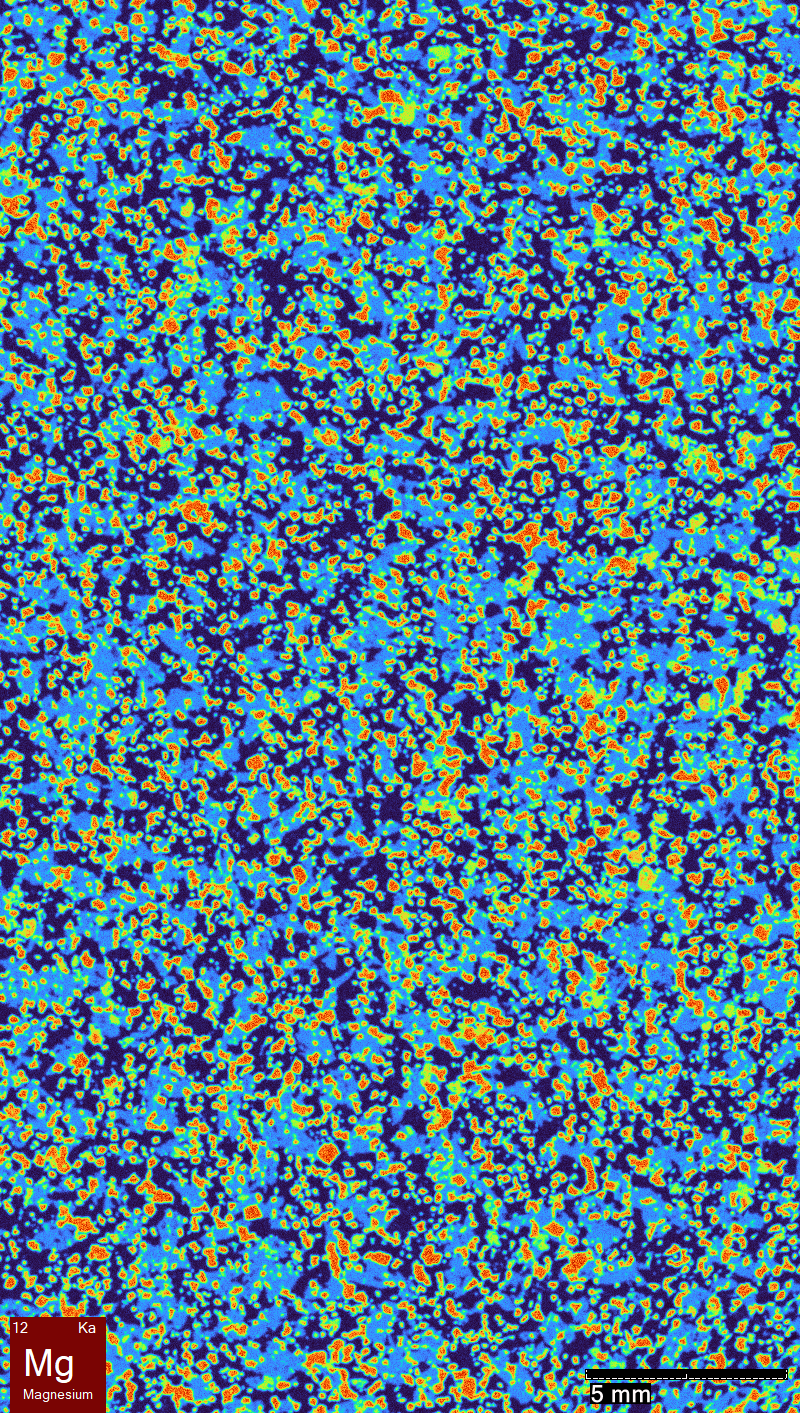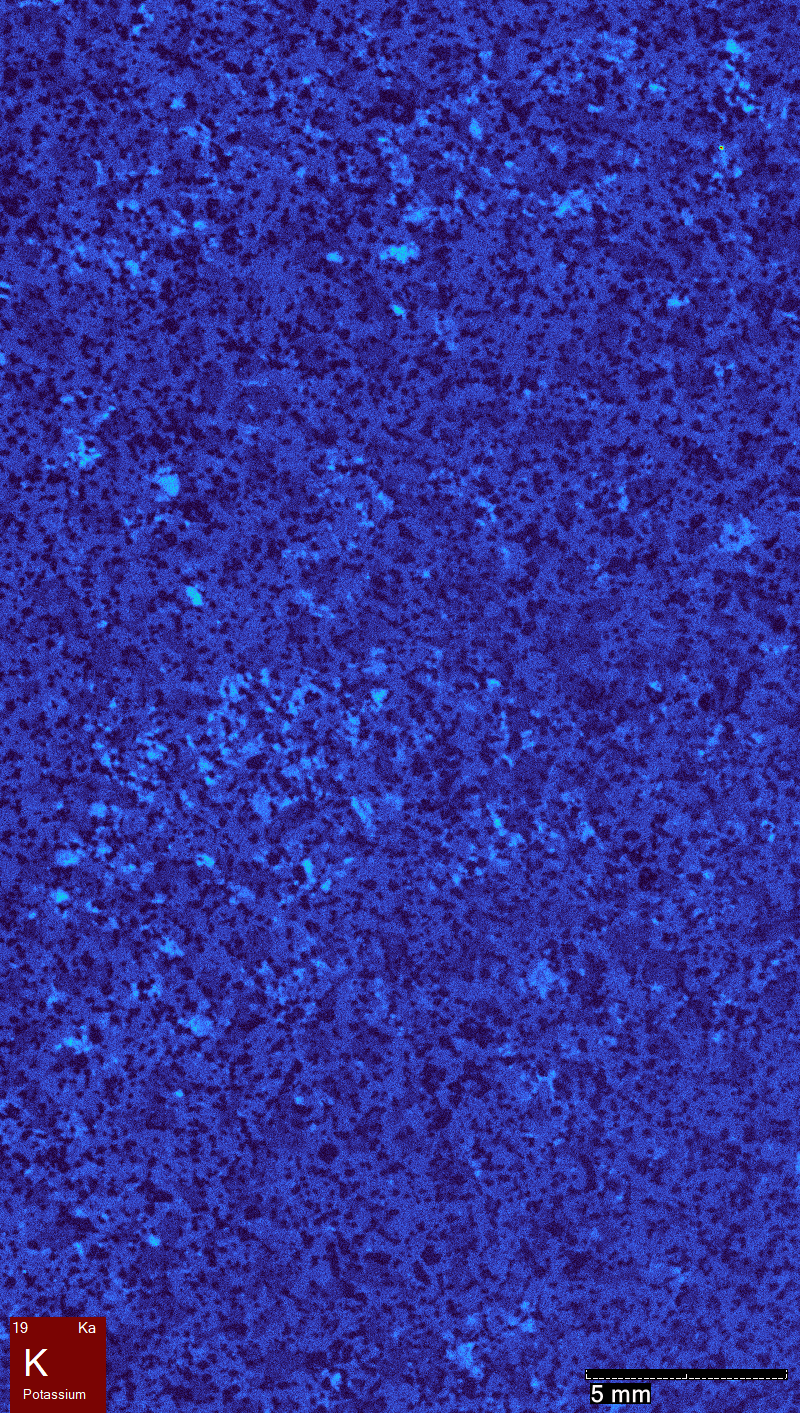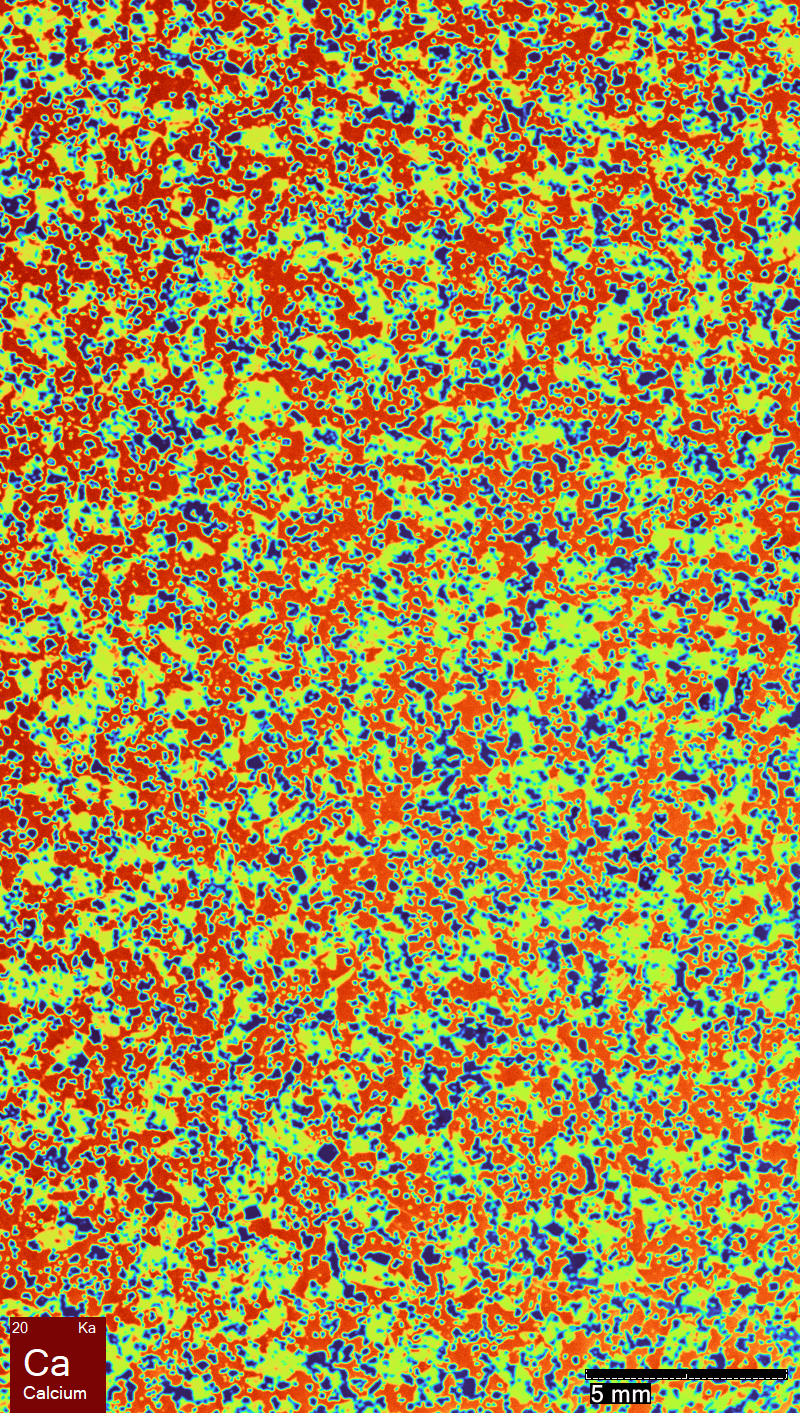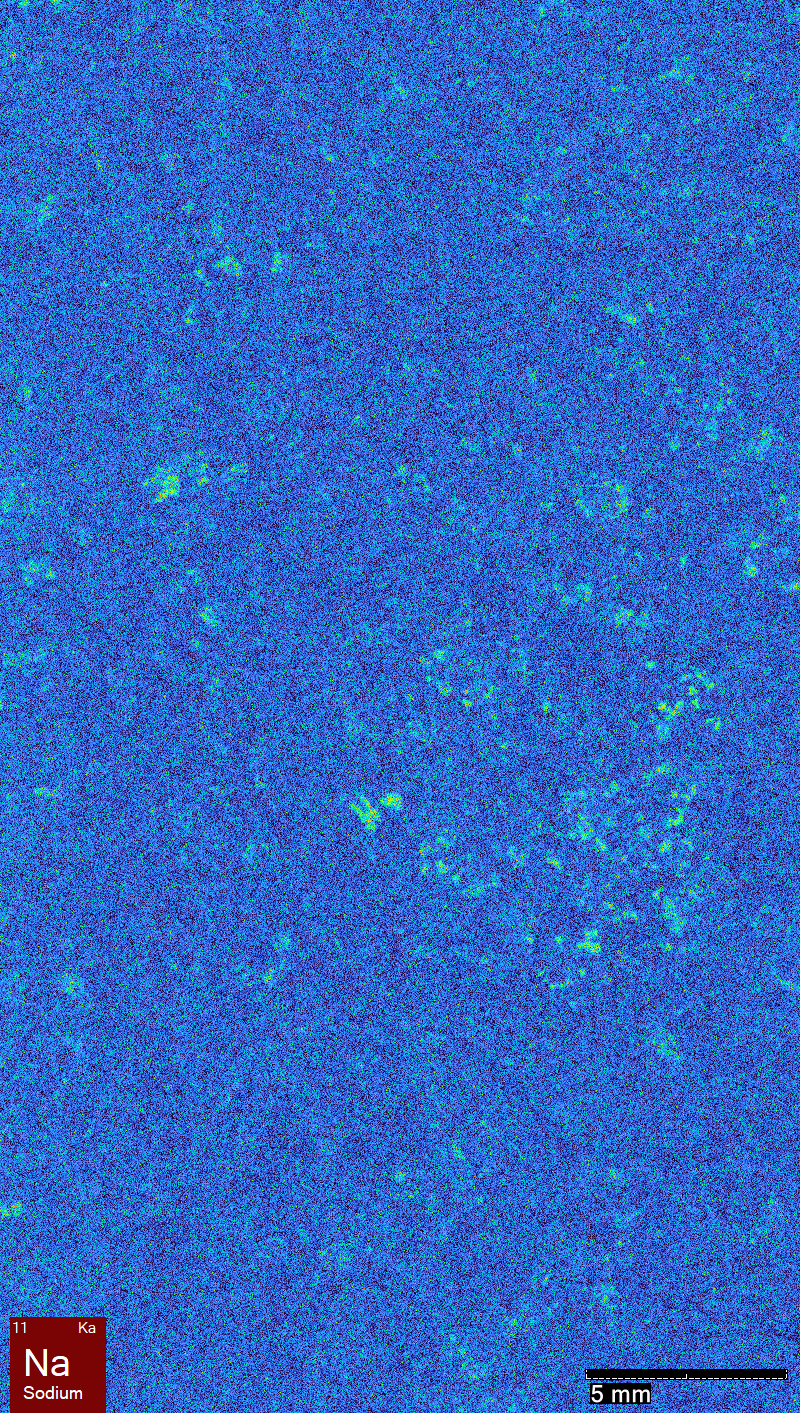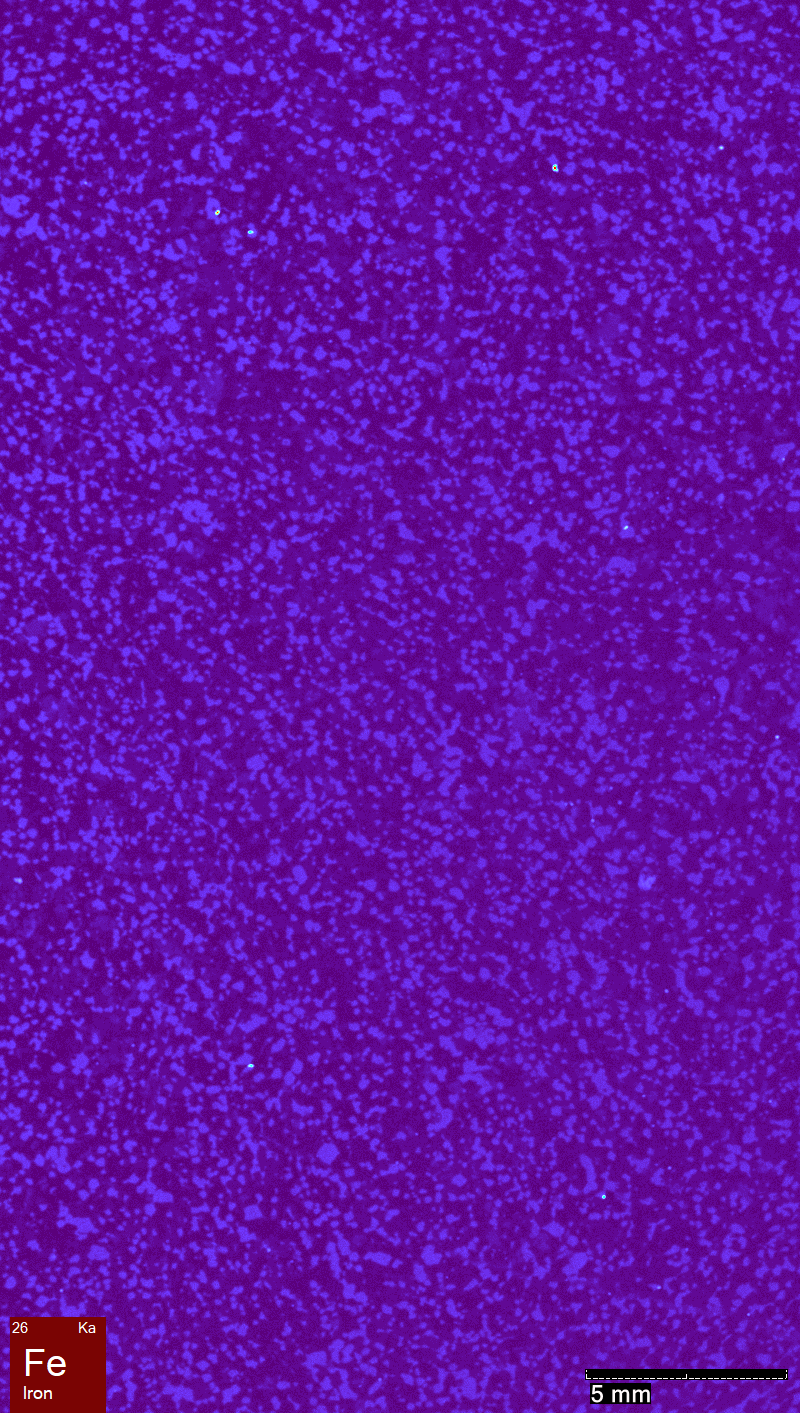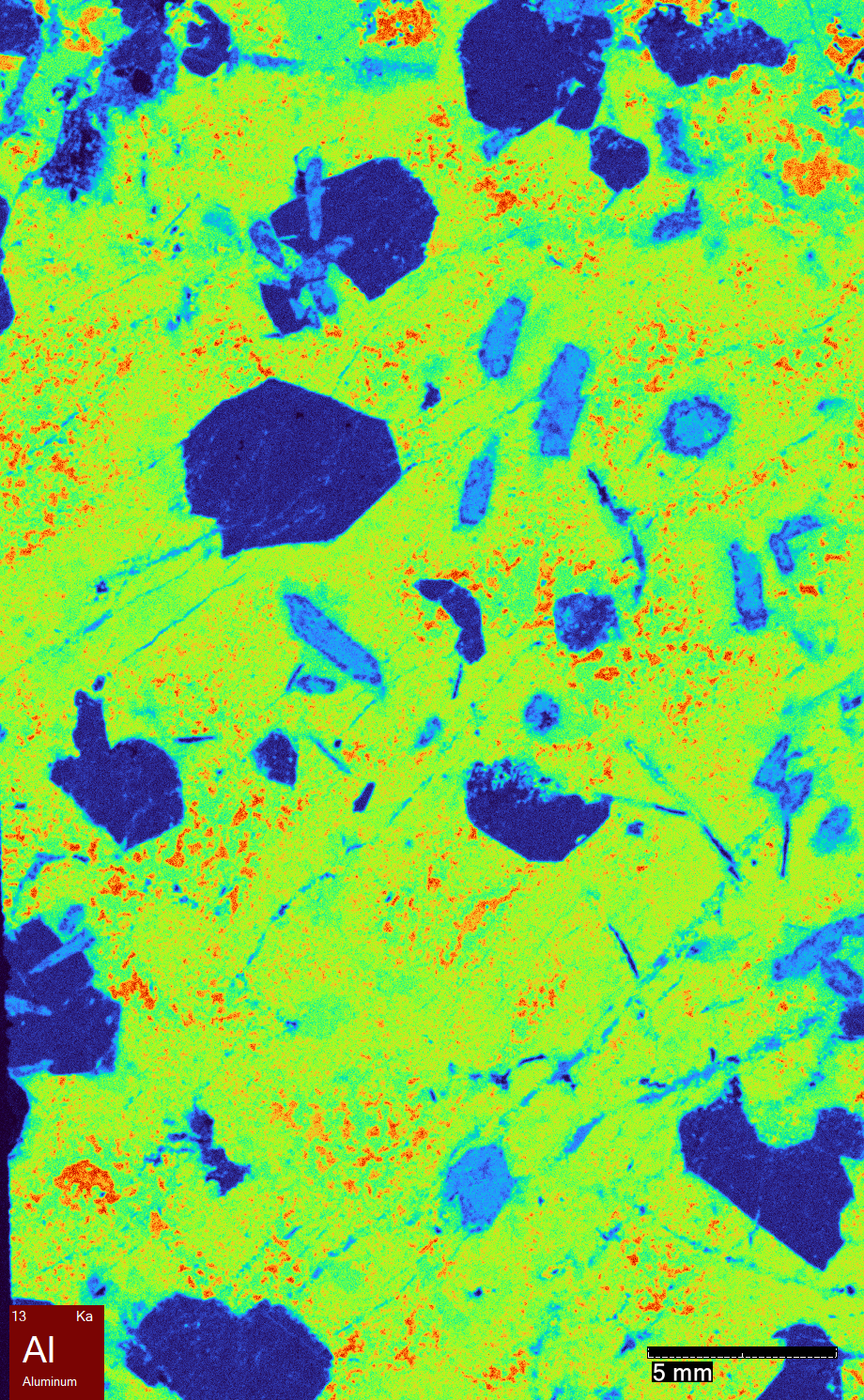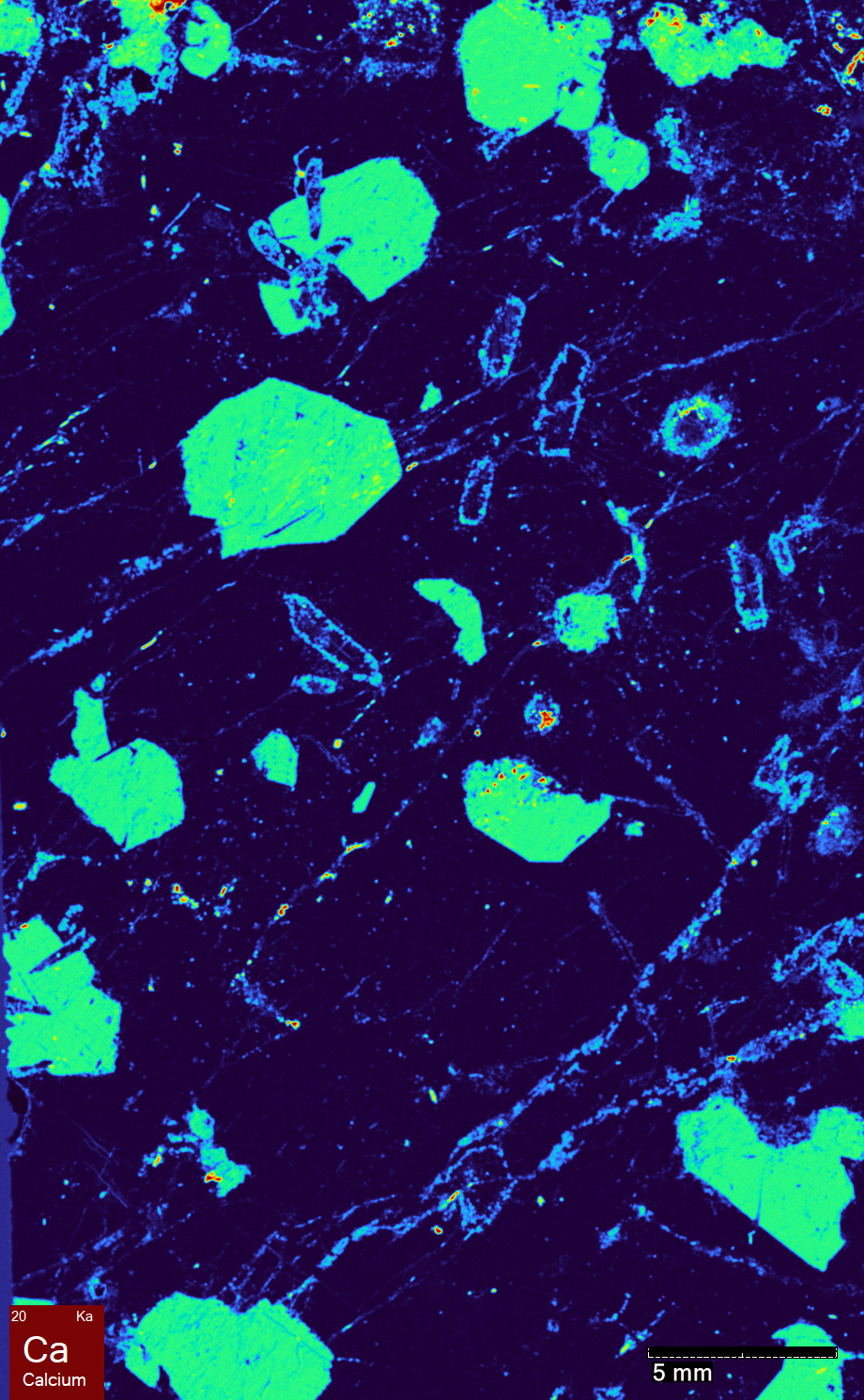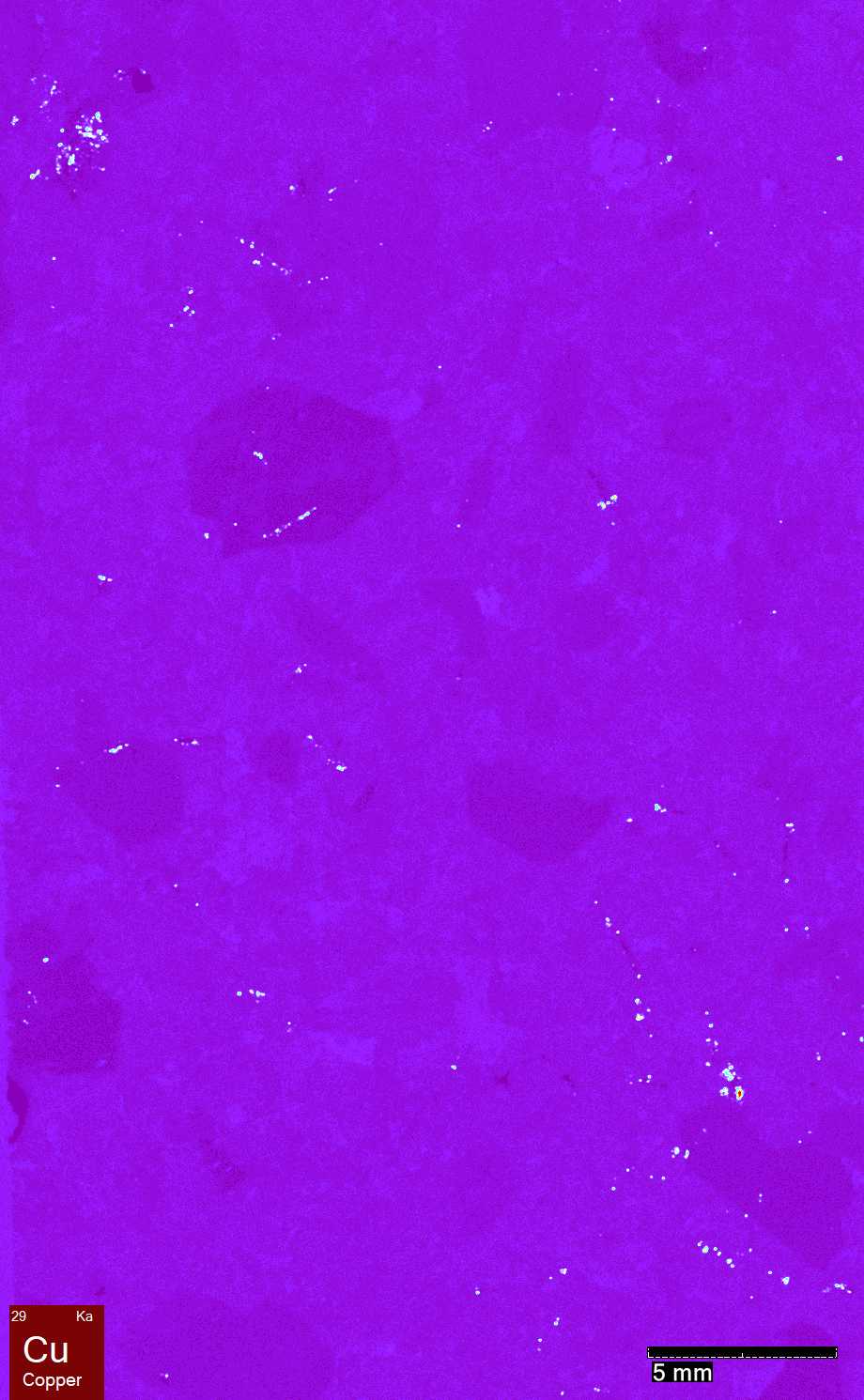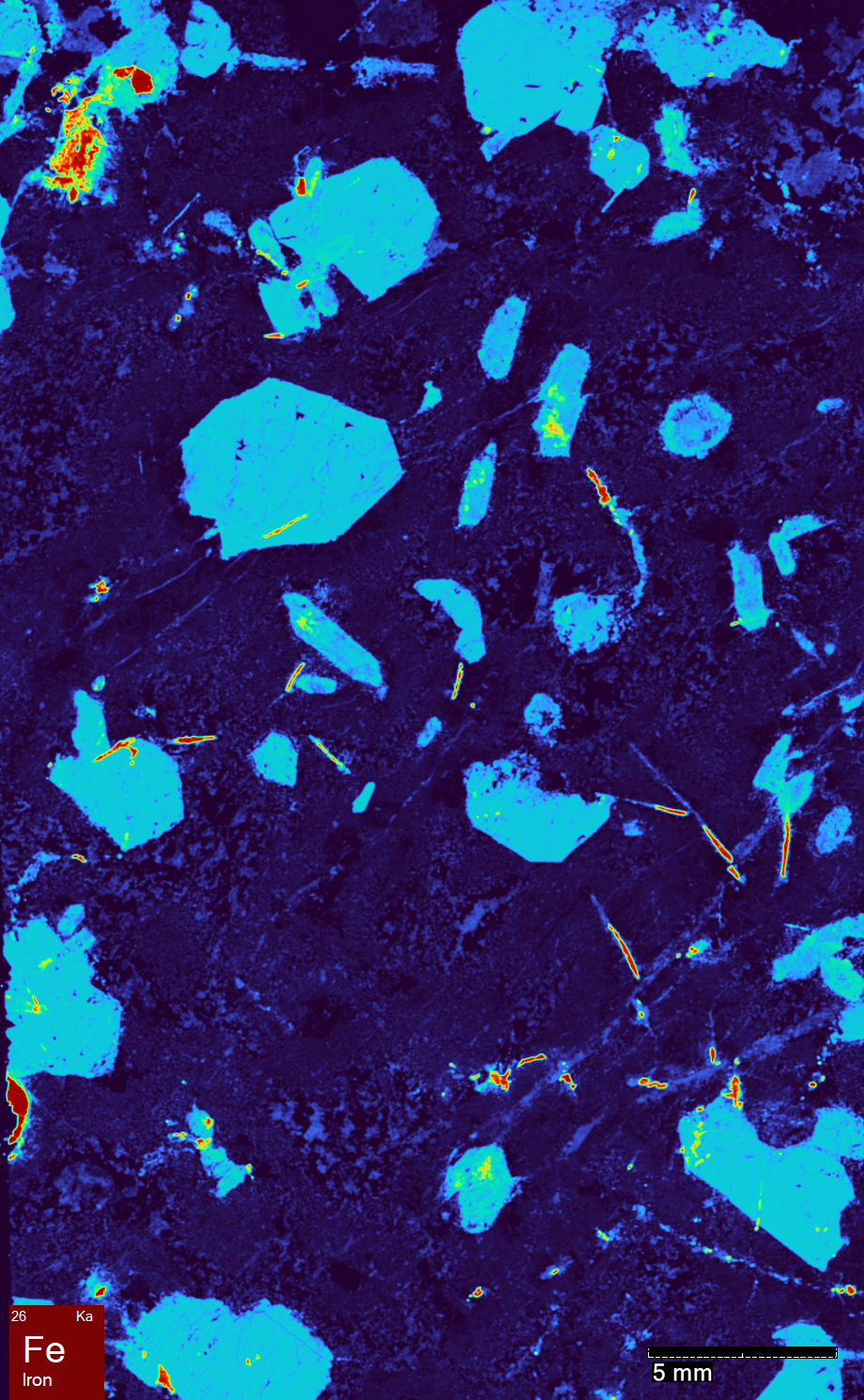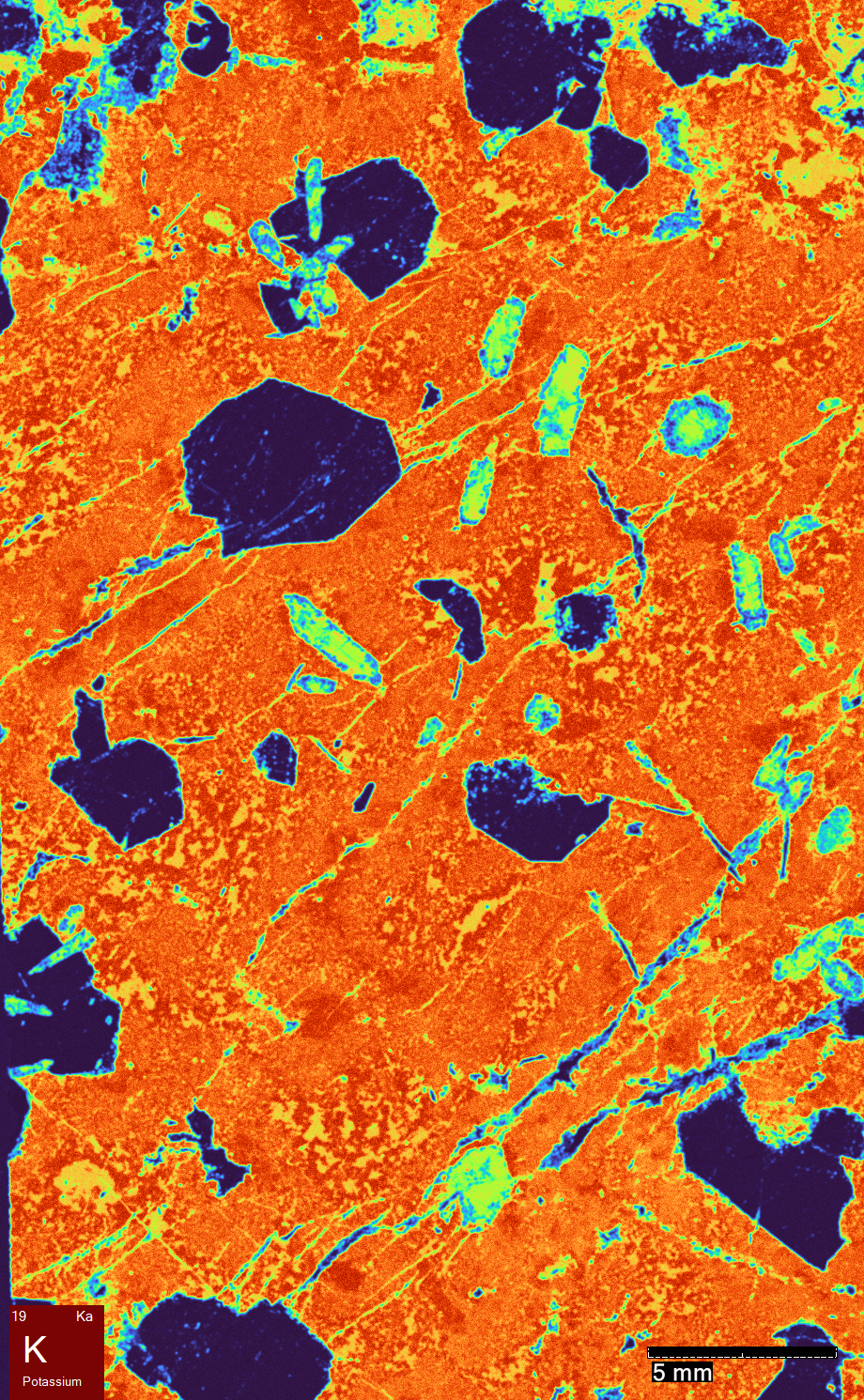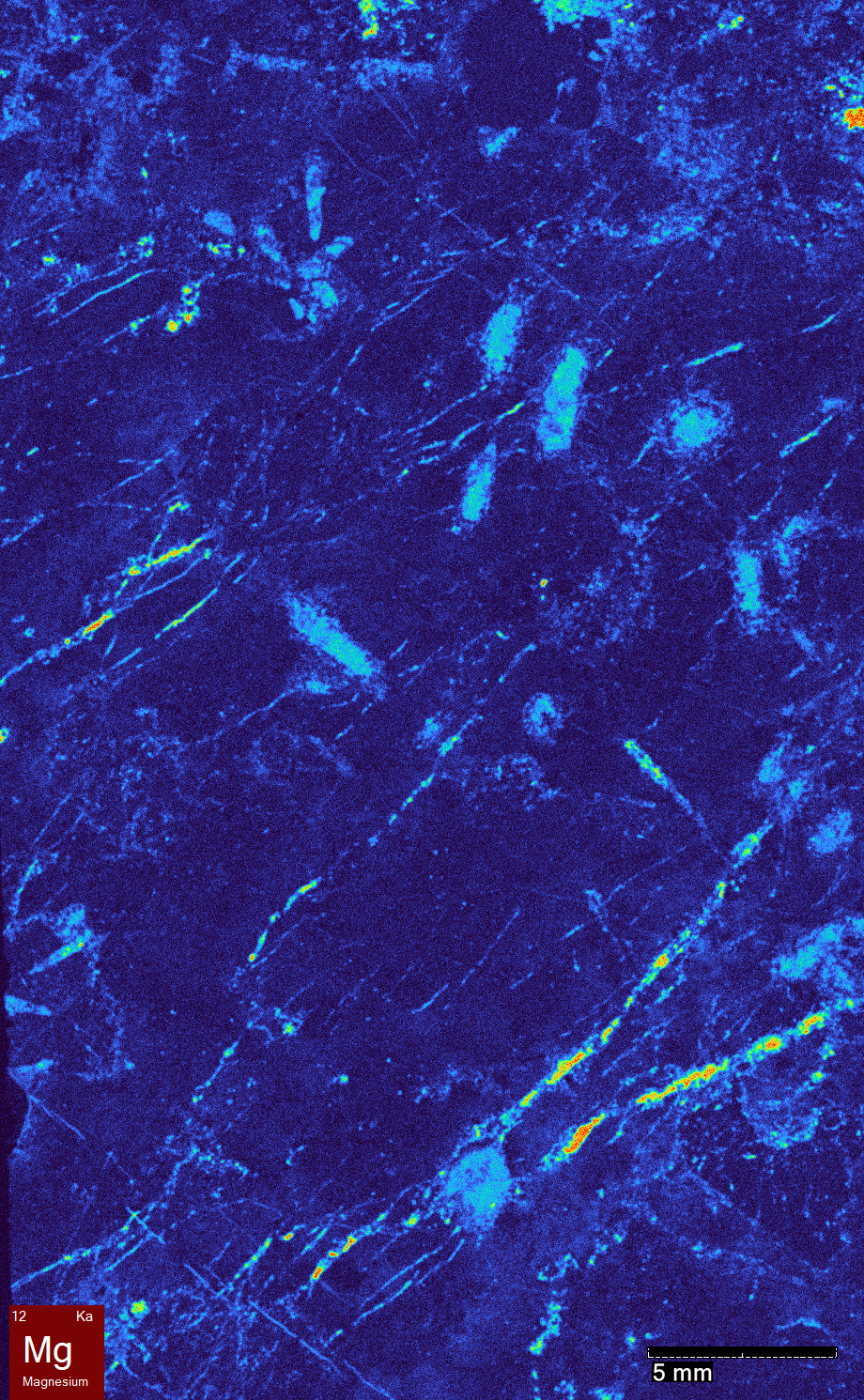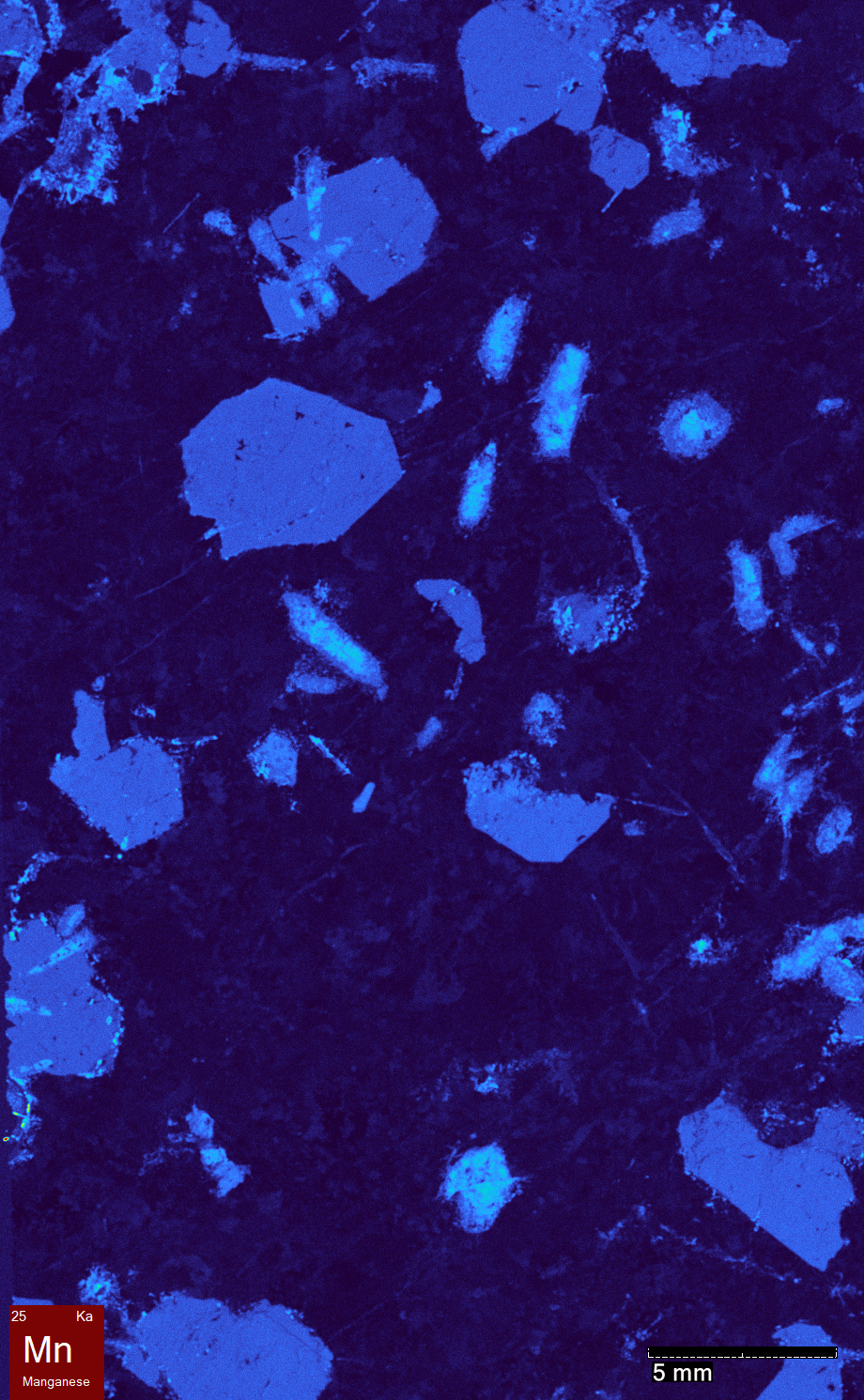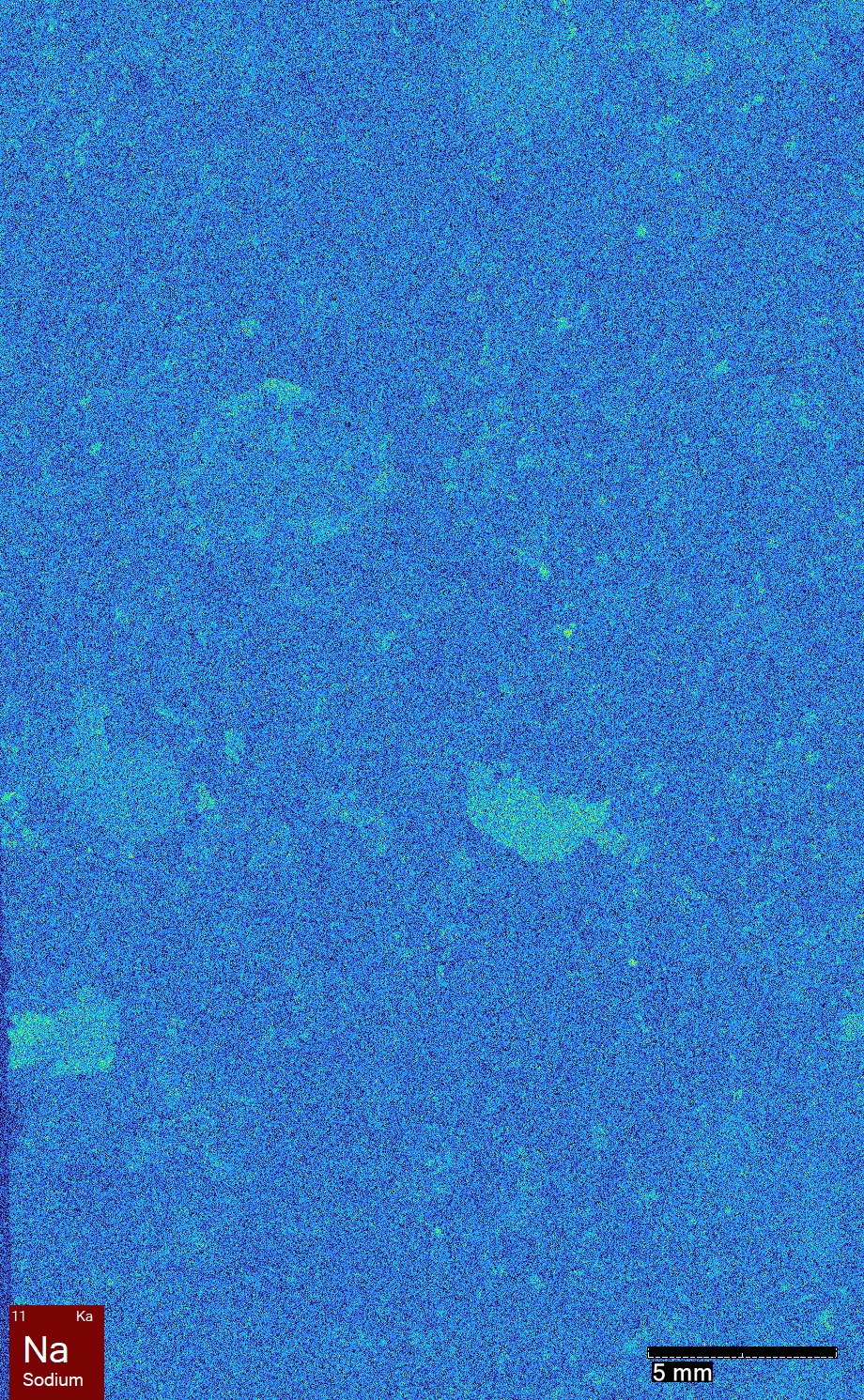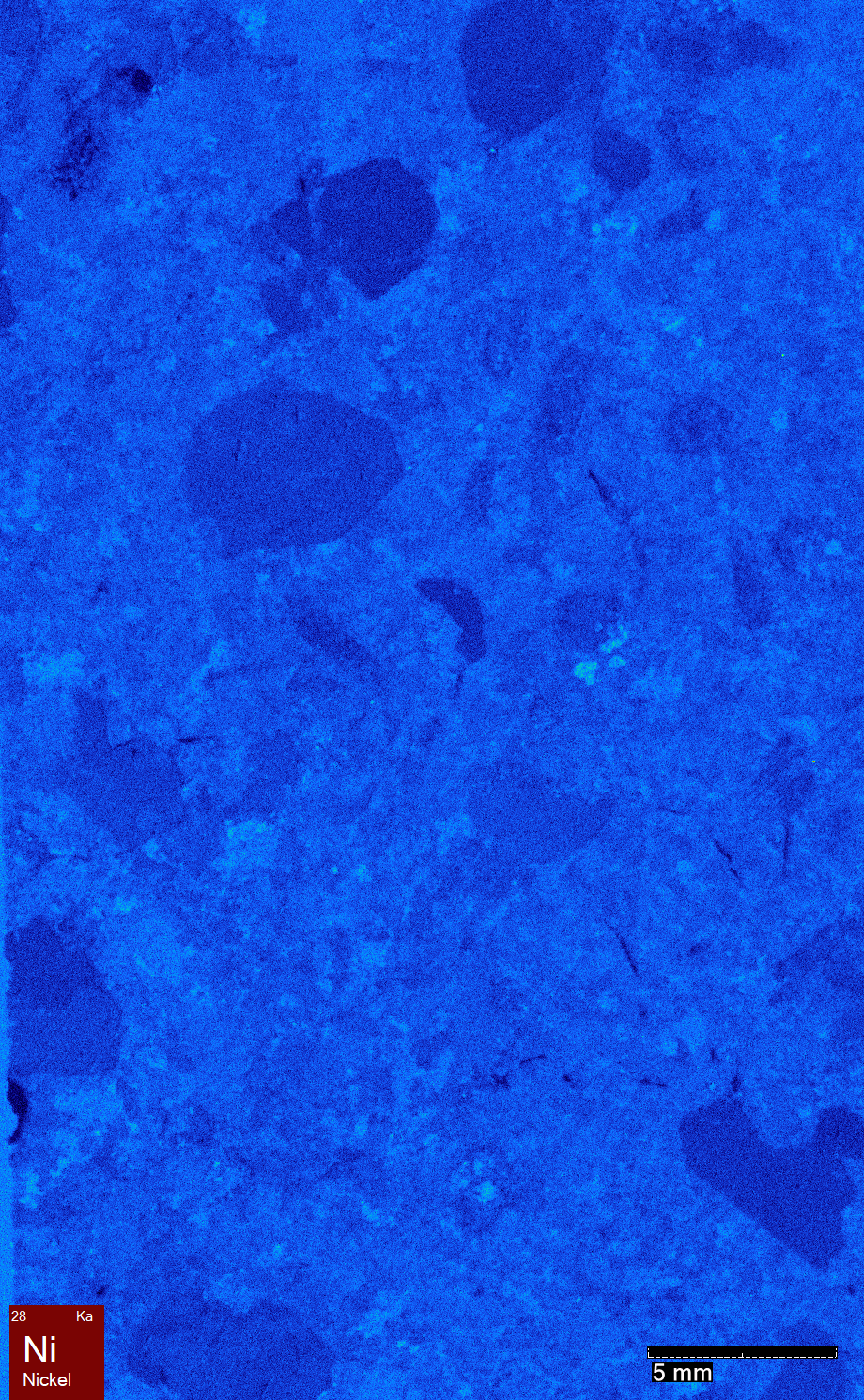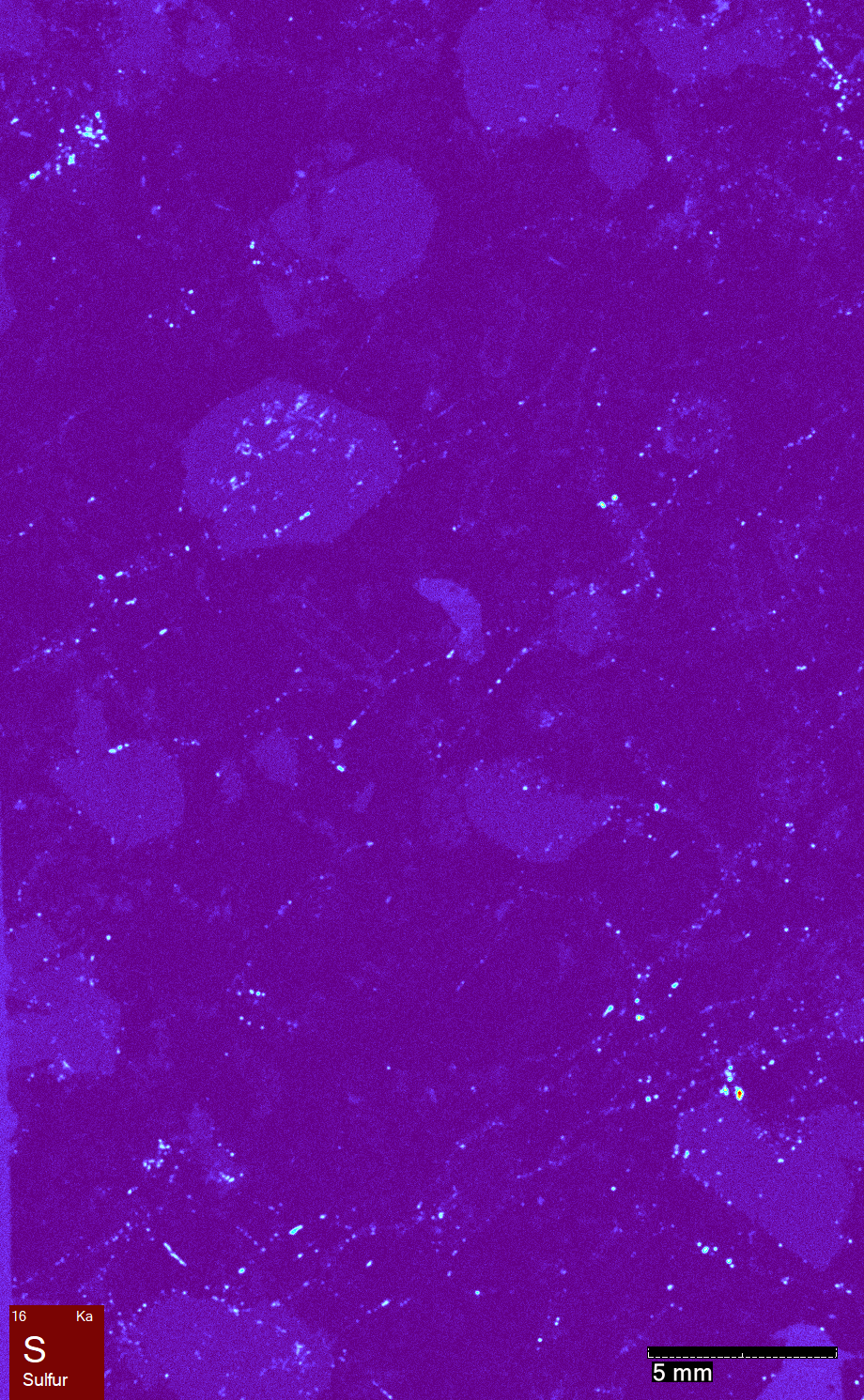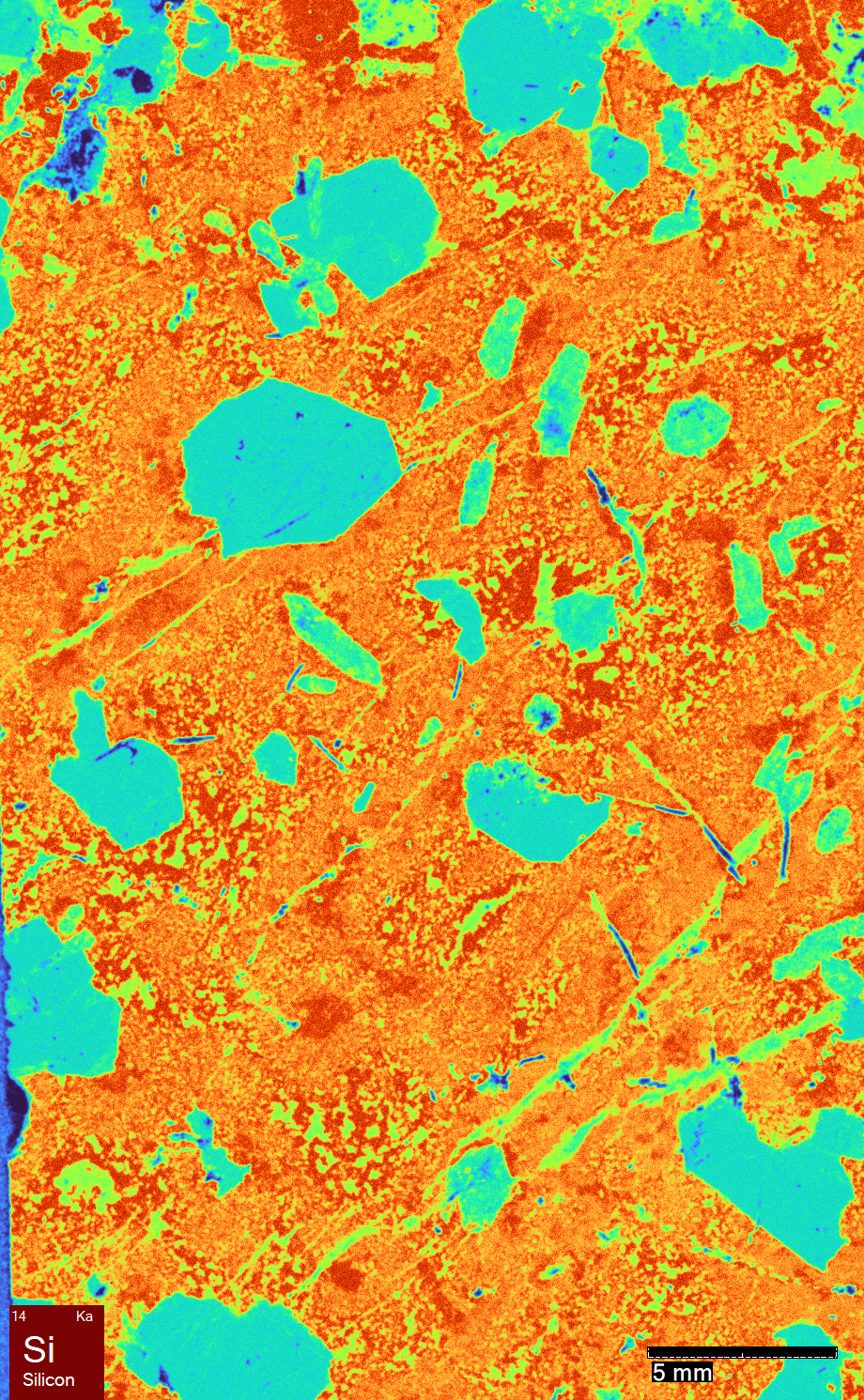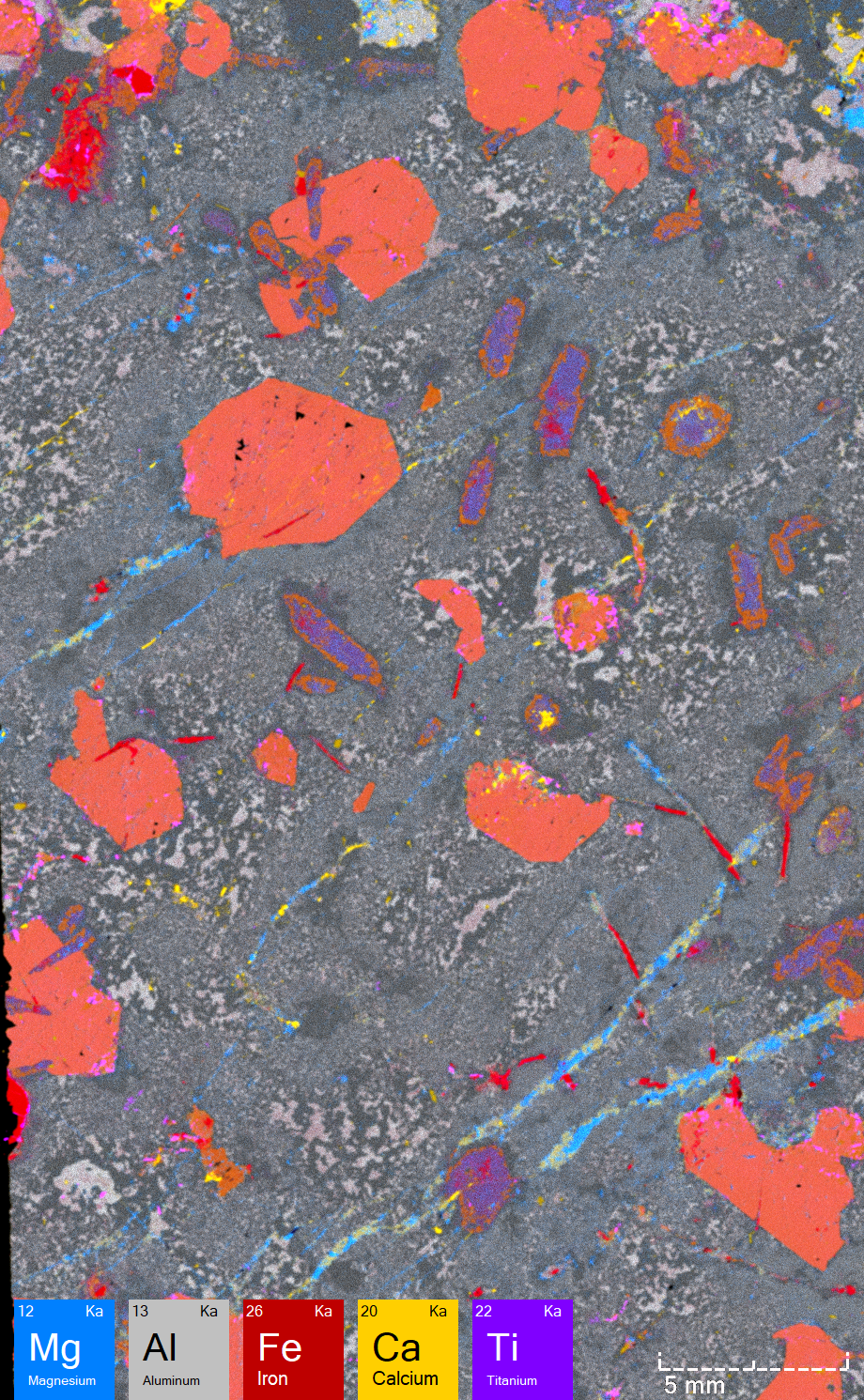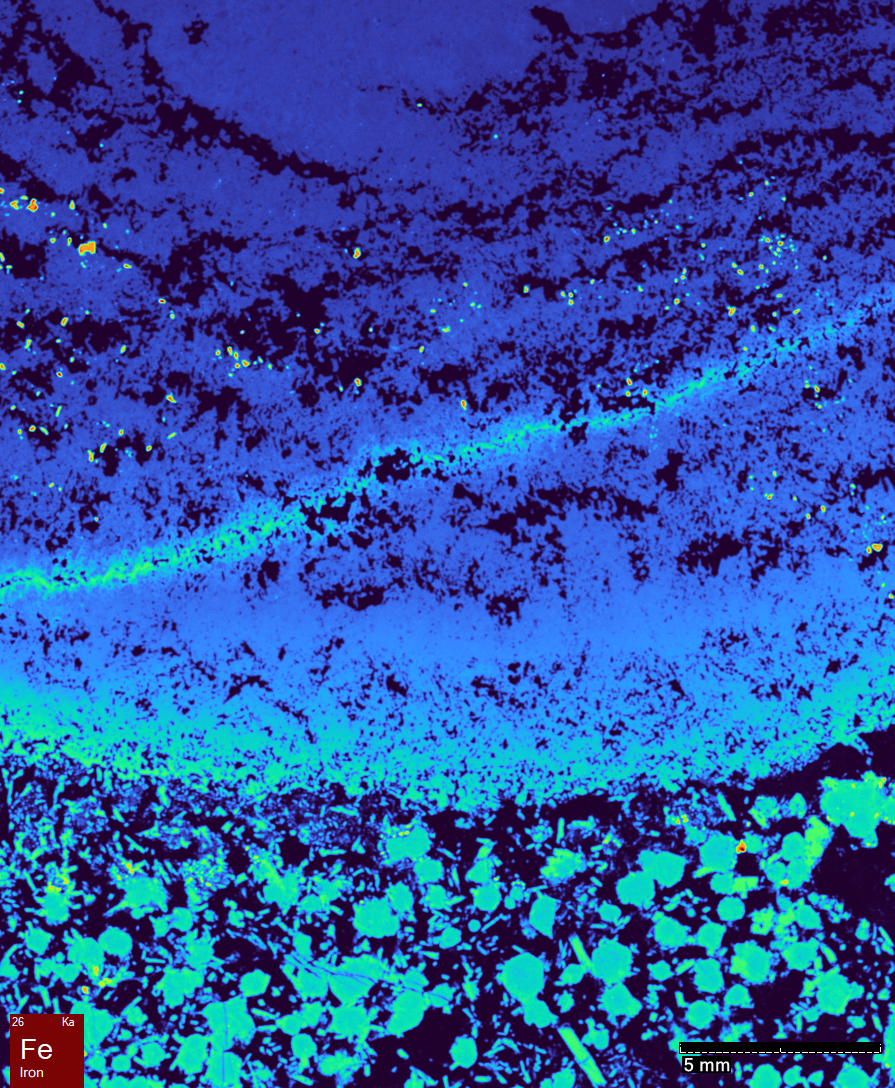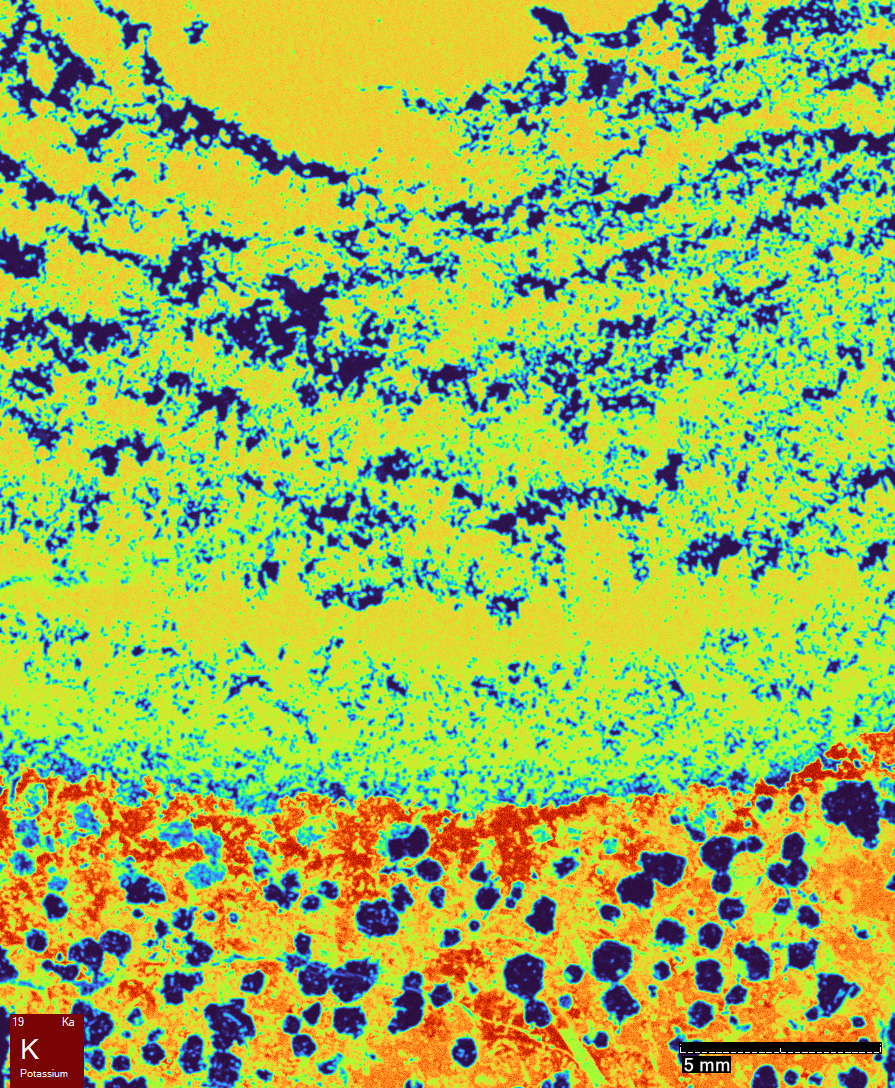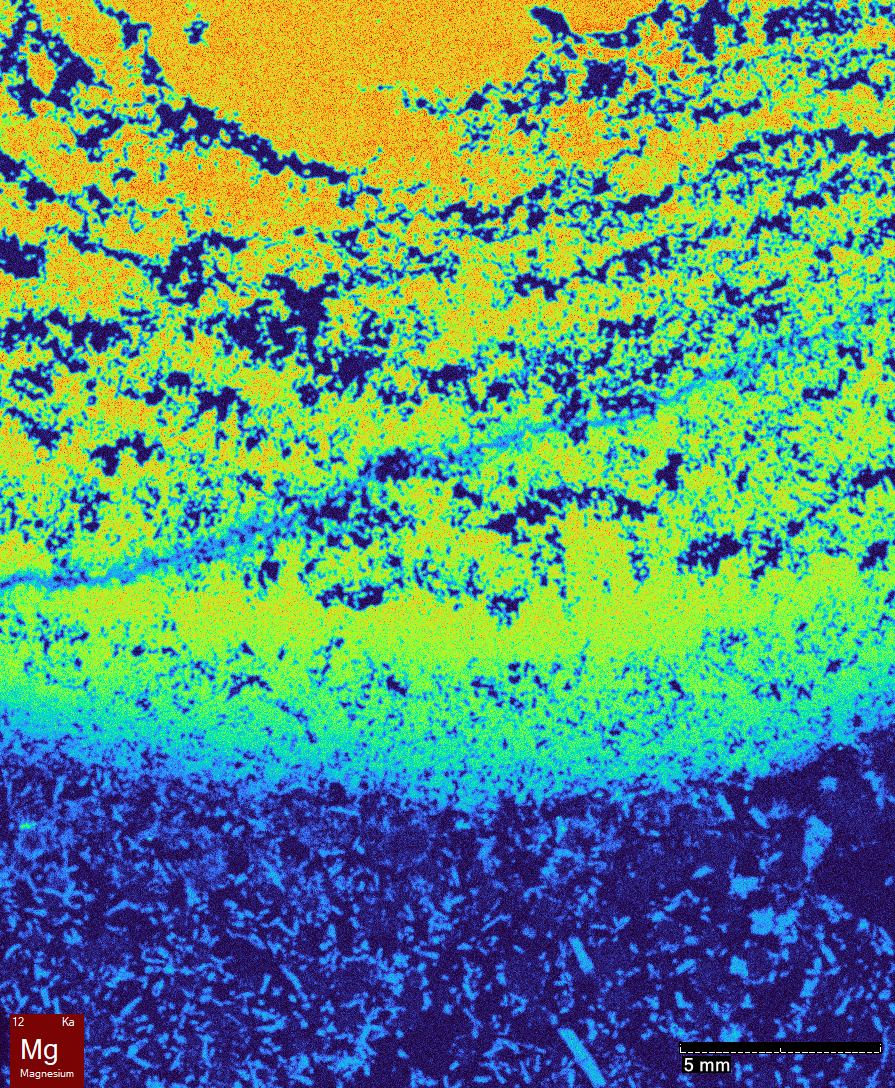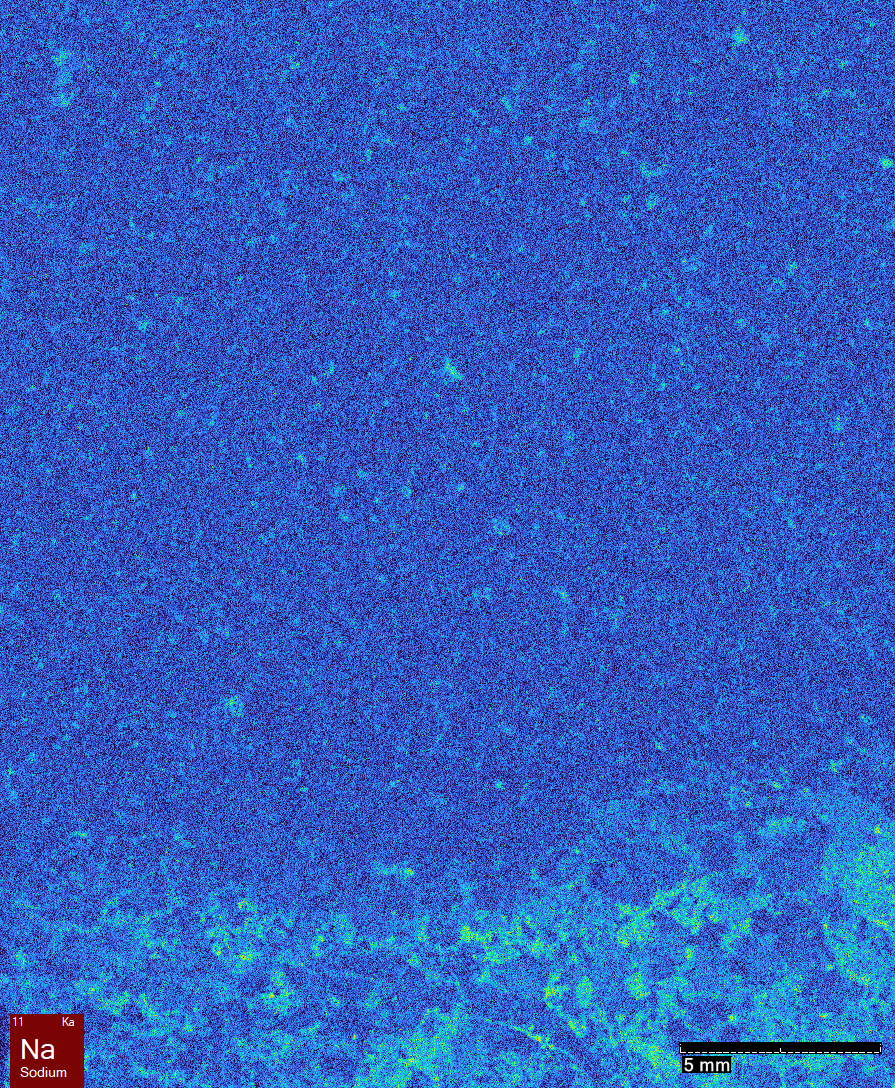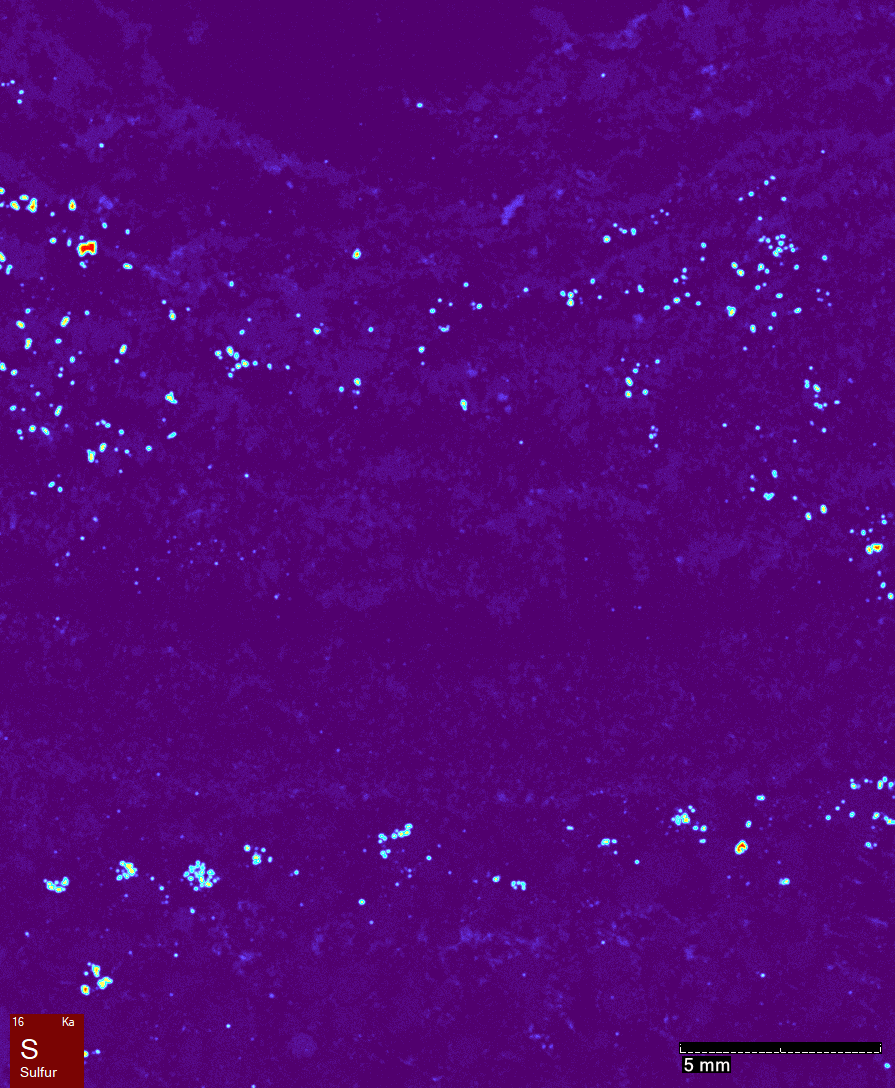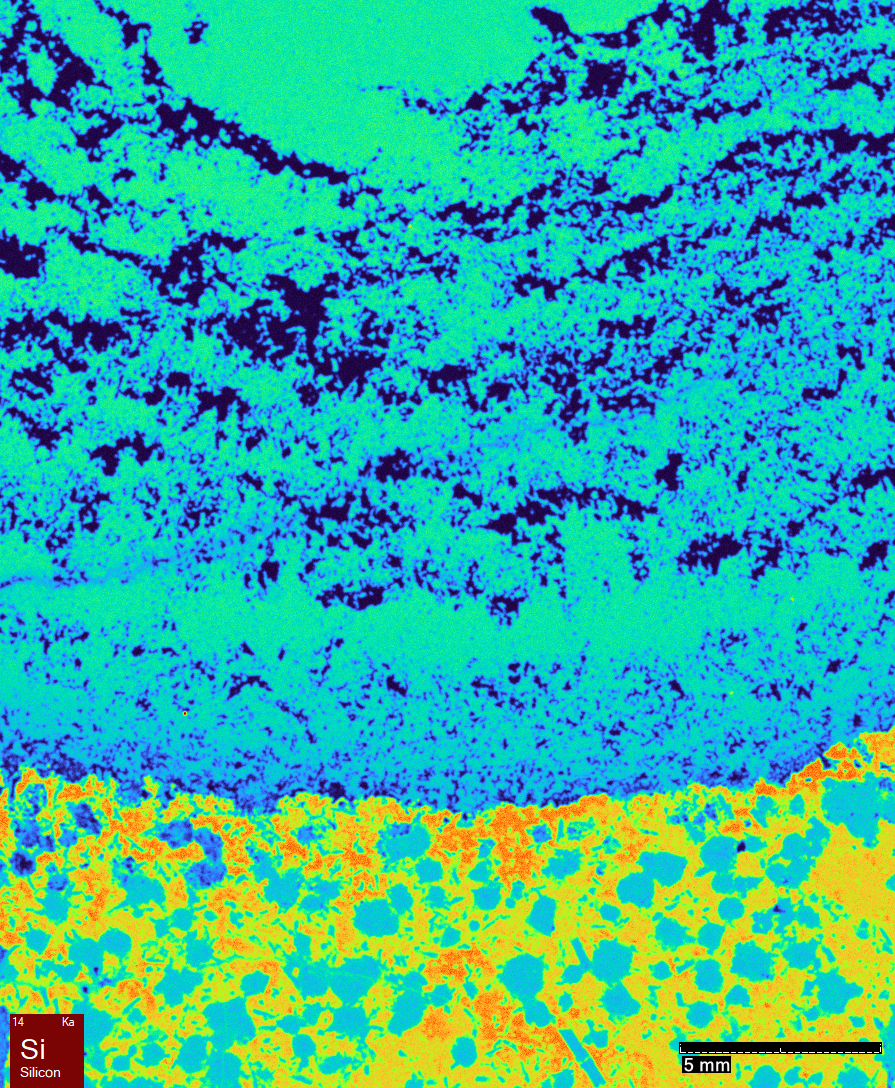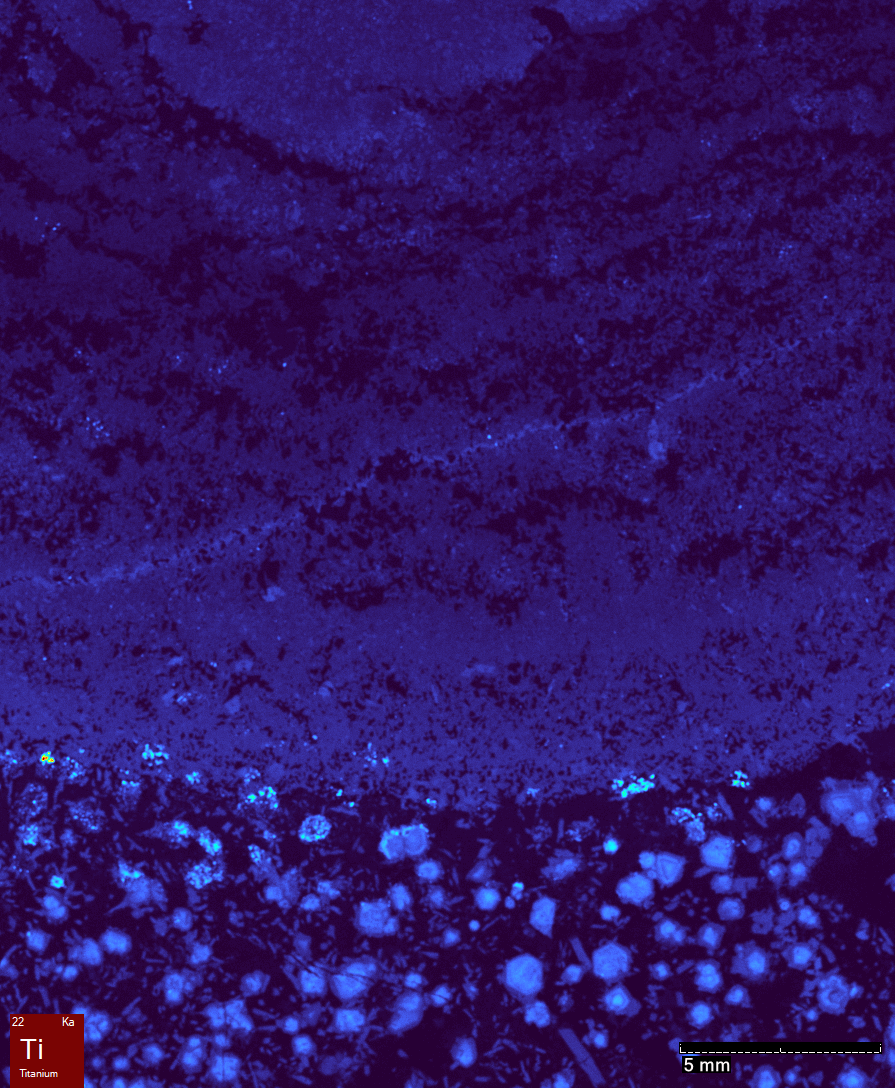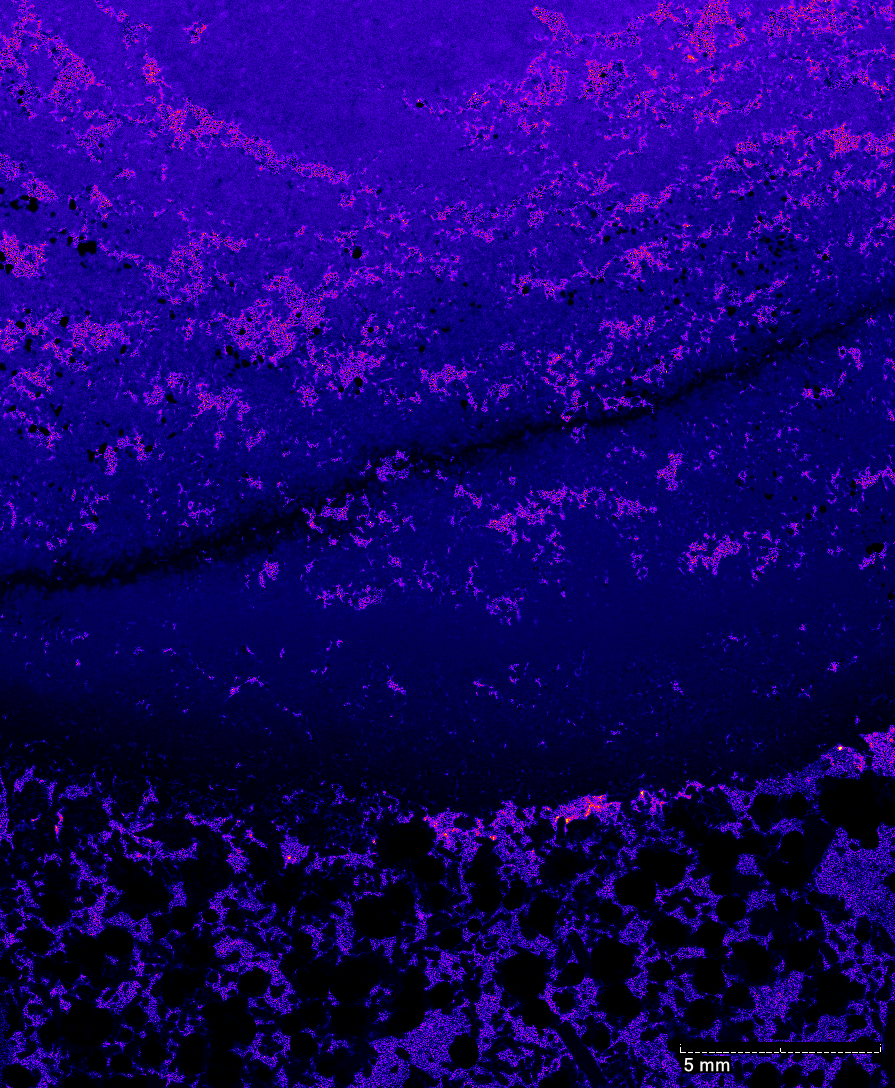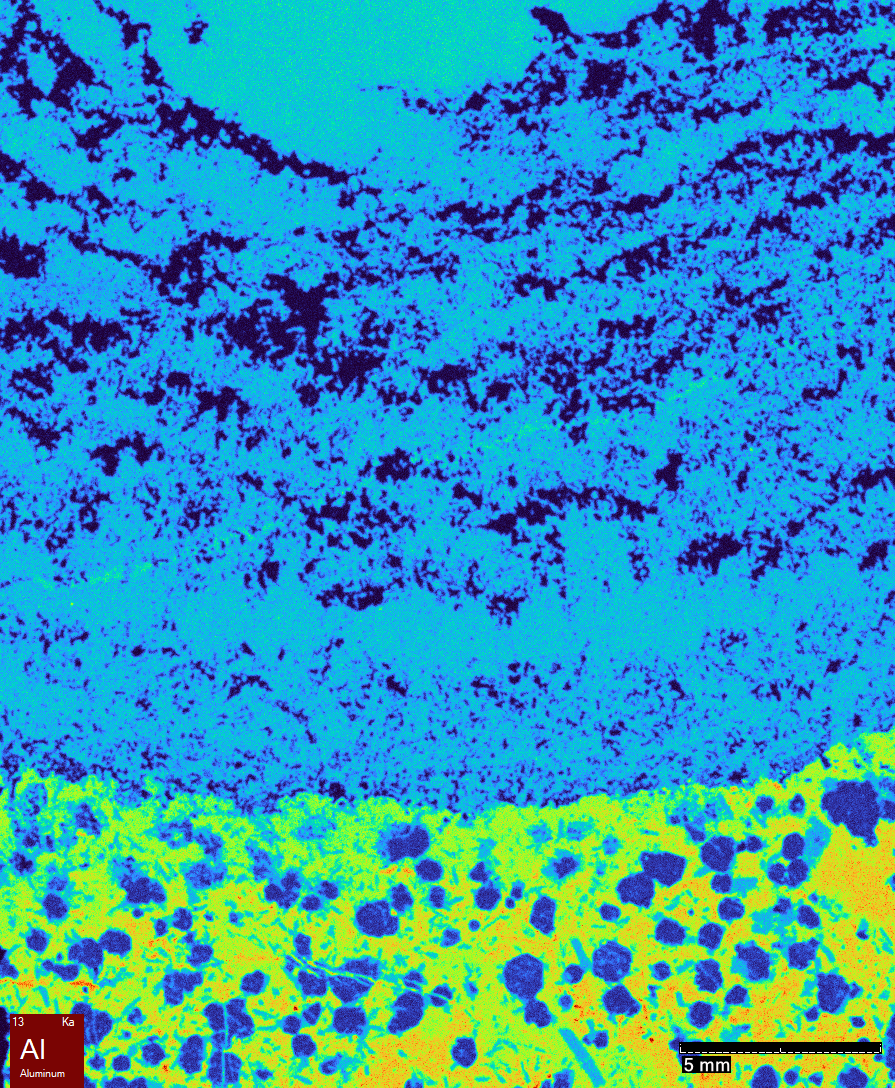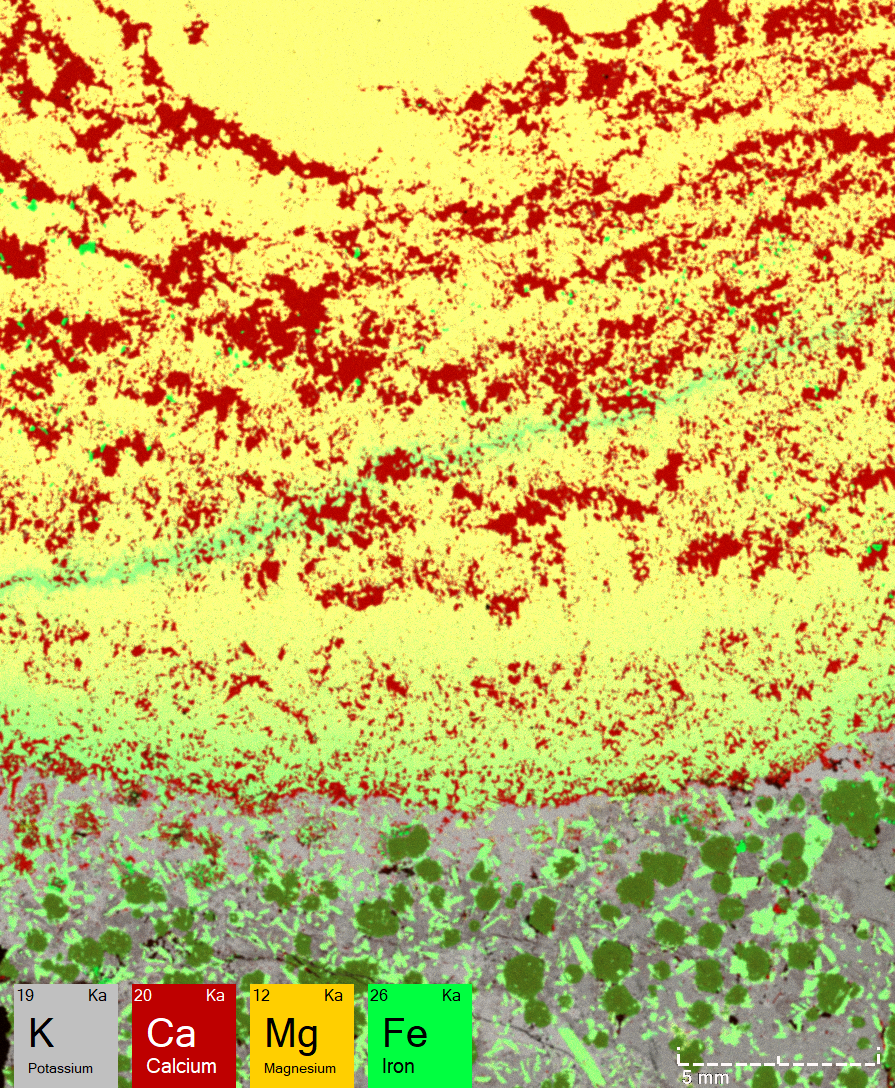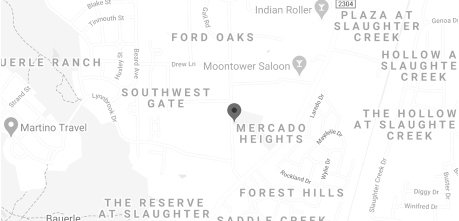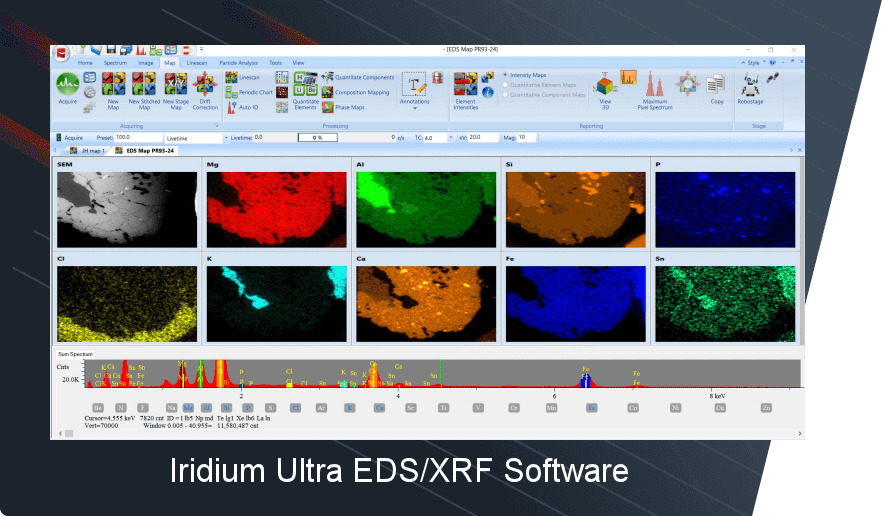In northwest Scotland, the Ledmore Quarry offers a unique geological setting where an alkali syenite intrusion transformed surrounding limestone into marble, resulting in rare mineral assemblages like brucite marble, Ledmoreite, and a distinct metasomatized marble-syenite interface. These samples hold valuable clues to metamorphic and metasomatic processes, but their complex mineralogy and micro-scale variations require advanced analytical techniques. IXRF Systems’ Atlas M and Atlas X microXRF are ideally suited for such analysis, providing high-resolution elemental mapping and quantitative data across intricate mineral interfaces within these petrological thin sections.
Figure 1: Ledmore Quarry located in northwest Scottland.
Challenges in Thin Section Analysis
Traditional techniques, such as optical microscopy and electron microprobe analysis, often fall short of capturing the intricate chemical composition and subtle elemental gradients in metamorphic rocks like those from Ledmore Quarry. Analyzing heterogeneous samples with mineral reaction zones is critical for understanding geological histories, and this is where the Atlas microXRF excels—offering researchers high spatial resolution and minimally invasive solutions to visualize and quantify elemental distributions.
Using the Atlas microXRF for Ledmore Quarry Samples
The Atlas’s high spatial resolution and broad elemental range (C to U) make it an excellent choice for analyzing these unique petrological samples from Ledmore Quarry. Here’s how it was applied to examine these thin sections:
1. Brucite Marble Analysis
The brucite-rich zones within the marble indicate contact metamorphism. With the Atlas microXRF, geologists can map Mg, Ca, and Si distributions, revealing zones of high Mg concentration that correspond to brucite. This mapping provides valuable data on metamorphism’s temperature and pressure conditions, highlighting areas where element migration occurred.
Figure 2: False-color 2D microXRF maps of Brucite marble showing Na, Mg, Al, Si, K, Ca, Ti, Fe distribution in thin section.
2. Ledmoreite Identification
Ledmoreite, a rare mineral in this geological context, forms through intense chemical exchange between syenite and limestone. The Atlas captures the distribution of key elements (e.g., K, Na, Al, Si) critical for identifying Ledmoreite, allowing precise mineral mapping within the thin section. This capability offers mineralogists a powerful tool to study the chemical conditions supporting rare minerals’ formation.
Figure 3: False-color 2D microXRF map of Alkali syenite (Ledmoreite) showing Na, Mg, Al, Si, S, K, Ca, Ti, Mn, Fe, Ni, Cu, Zn distribution in thin section.
3. Metasomatized Marble-Syenite Interface
The Atlas’s high resolution is beneficial for examining the metasomatized marble-syenite interface. By mapping elements like Ca, Mg, and Fe across this boundary, petrologists can track zones where silicate-carbonate reactions occurred, aiding in the reconstruction of fluid flow paths and the temperature gradients that drive metasomatism.
Figure 4: False-color 2D microXRF map of Metasomatized marble-syenite interface showing Na, Mg, Al, Si, S, K, Ca, Ti, Fe distribution in thin section.
The Impact of High-Resolution MicroXRF on Petrological Studies
The Atlas microXRF provides unparalleled detail in analyzing petrological samples, allowing researchers to map elemental distributions non-destructively and with high spatial resolution (as low as 5 microns). This capability enhances petrological studies by:
- Offering Detailed Elemental Mapping: The Atlas captures multiple elements simultaneously, essential for analyzing mineral boundaries and complex reaction zones.
- Enabling Rare Mineral Identification: High-resolution imaging facilitates the mapping of rare minerals like Ledmoreite, allowing for detailed study of their unique chemical environments.
- Non-Destructive Analysis: Unlike techniques that require extensive preparation, Atlas’s non-invasive analysis preserves the integrity of rare or irreplaceable geological specimens.
Conclusion
Using the Atlas microXRF, geologists gain a powerful tool to analyze intricate mineral interactions and elemental distributions in complex petrological samples from Ledmore Quarry. This case study illustrates the transformative potential of high-resolution microXRF technology in petrological research, empowering scientists to reconstruct geological histories with precision and clarity. IXRF Systems is proud to support this journey with the Atlas, which continues to set a high standard for elemental analysis in geology and materials science.
Special Thanks
We sincerely thank Dr. Richard Palin and the University of Oxford Earth Sciences for supplying these unique Ledmore Quarry samples and sharing their invaluable geological insights. Their contributions have guided this analysis and deepened our understanding of the quarry’s complex geological history.
About IXRF Systems
IXRF Systems specializes in cutting-edge micro-XRF solutions, providing researchers worldwide with powerful material and geological analysis tools. The Atlas microXRF, designed for high spatial resolution and non-destructive elemental mapping, is ideal for academic and industrial laboratories. Through the Atlas, IXRF Systems remains committed to advancing analytical instrumentation and supporting discoveries in materials science, geology, and beyond.
